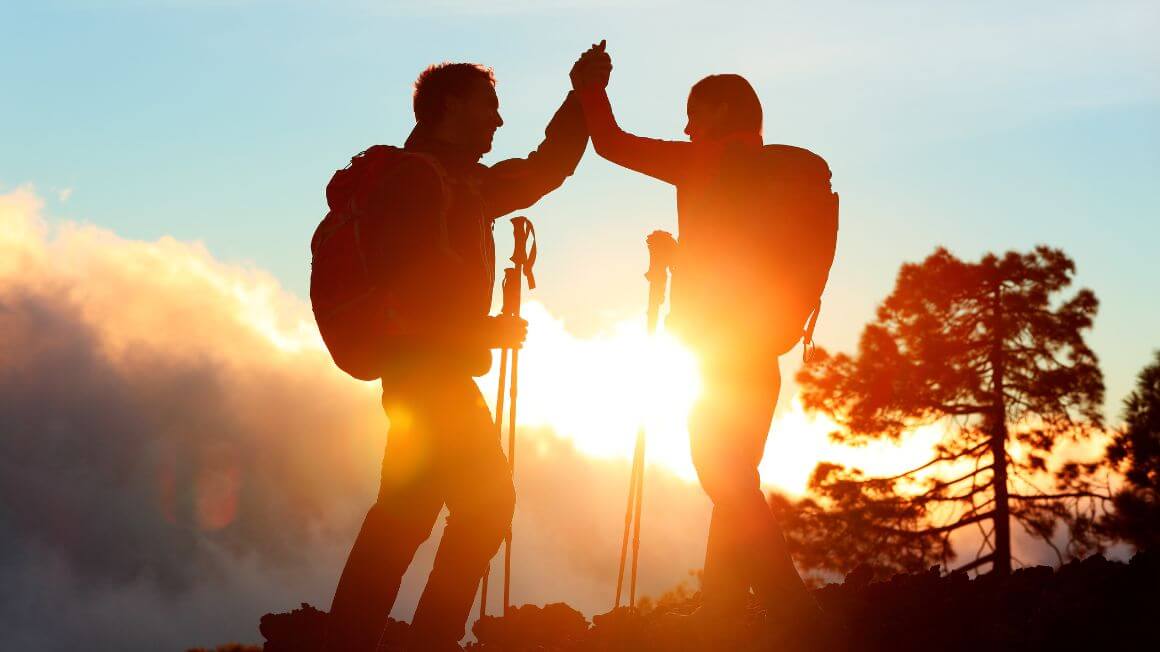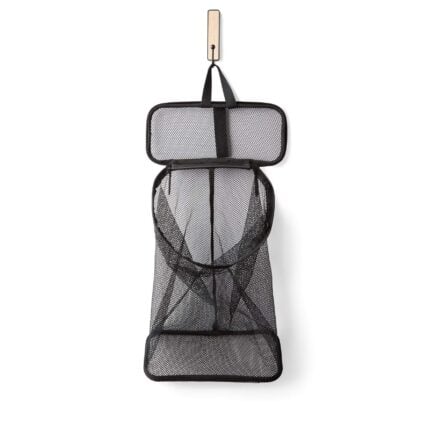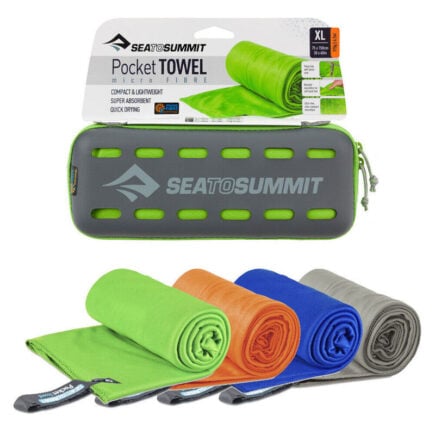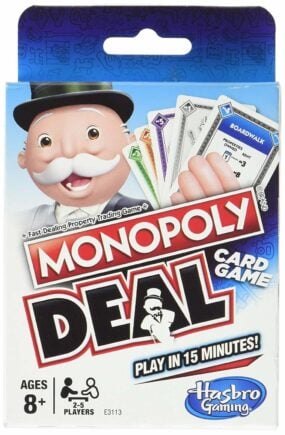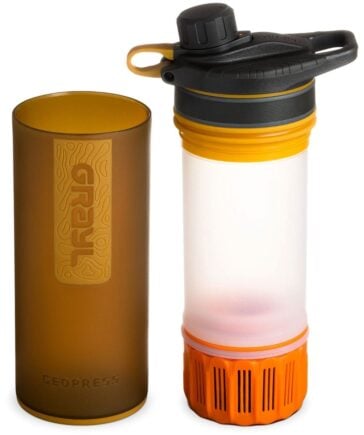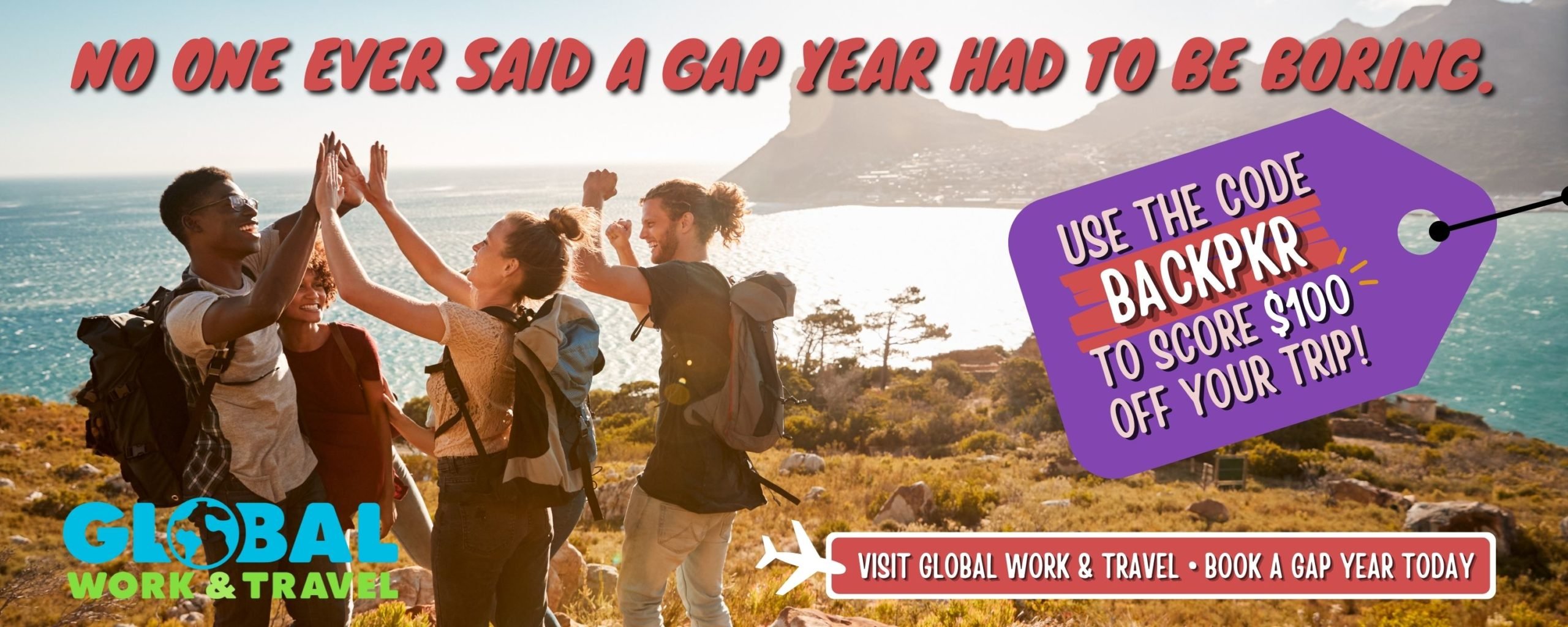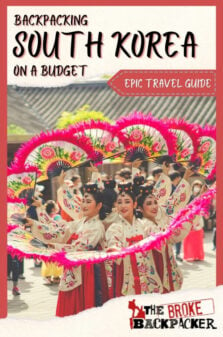Backpacking South Korea is all about experiencing both sides of this country – the traditional and modern aspects of South Korean culture.
Known as the “Land of the Morning Calm,” South Korea is a fascinating country, a place where ancient temples and skyrise buildings stand side by side.
What comes to mind when you hear of South Korea? For many, the bustling capital city of Seoul is the first place to come to mind.
This sprawling metropolis is certainly the center of attention, as it’s home to over half of South Korea’s population, but travelling in South Korea is about so much more than just exploring the big city.
Within a few hours of Seoul, you can find yourself hiking in rolling hills, reflecting at a peaceful temple, or exploring a traditional village.
Depending on what time of year you visit South Korea, you could be skiing the slopes or chilling on a beach. One thing is for sure; no matter when you visit, there’s probably some a festival taking place, whether it’s a traditional Korean holiday or a massive music festival.
You’ll also find a wealth of cultural and historical attractions in all corners of the country.
Of course, one of the highlights of backpacking South Korea is the incredible cuisine. Few countries are as defined by their food as South Korea, and the people take great pride in their culinary traditions.
Furthermore, South Koreans know how to party, so be prepared to wash that spicy kimchi down with several glasses of beer and soju.
Perhaps no place in the world presents a contrast quite like the Korean Peninsula. Split decades ago as a result of the Korean War, the difference between North and South is like night and day.
Whereas North Korea is isolated under totalitarian reign, highly-developed South Korea is one of the most modern countries in Asia. The two are split by the DMZ (Demilitarized Zone), an interesting name considering how many armed guards patrol it.
South Korea is often overlooked by backpackers who flock to South East Asia, but I’m here to show you why backpacking South Korea is an incredible travel experience.
Read my comprehensive South Korea travel guide below; it includes everything you need to plan an amazing trip, like costs, budget hacks, South Korea itineraries, how to get around, the foods to try, and so much more!
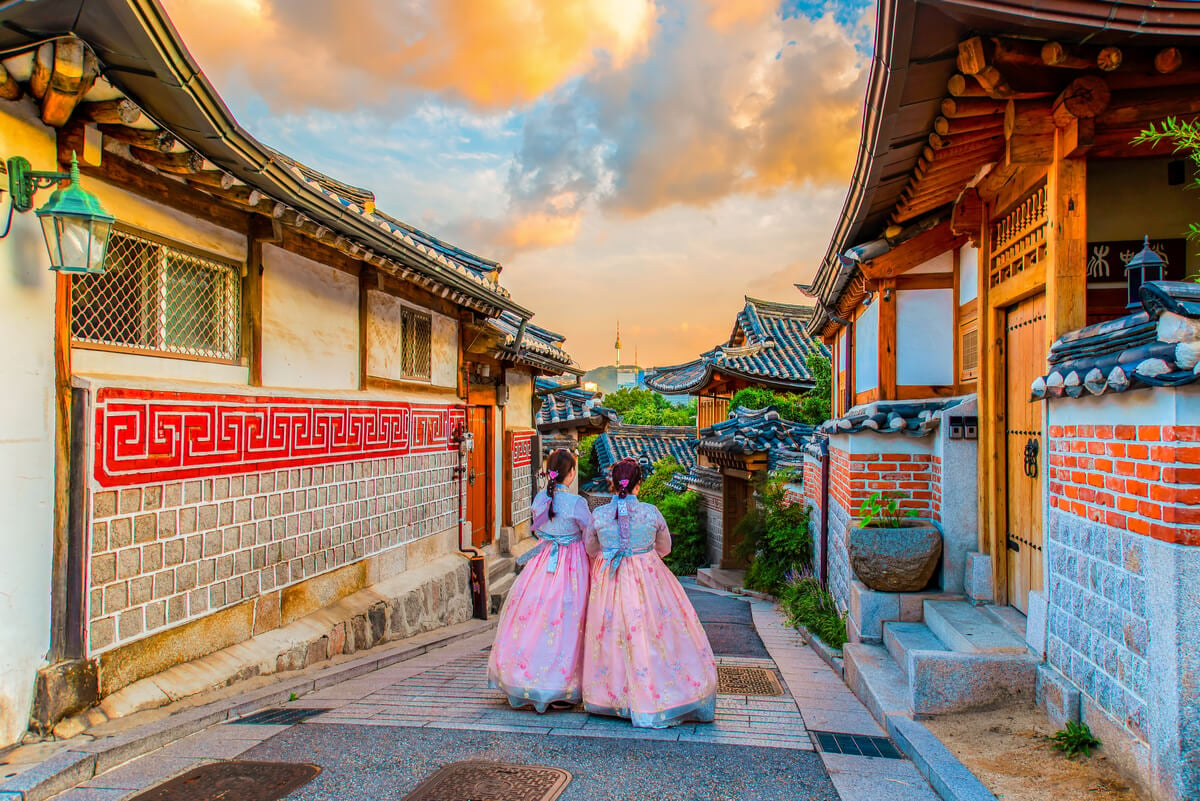
The Broke Backpacker is supported by you. Clicking through our links may earn us a small affiliate commission, and that's what allows us to keep producing free content 🙂 Learn more.
Why Go Backpacking in South Korea?
One great thing about traveling in South Korea is that you’re never too far from any other destination in the country. You can travel from one end to the other in five hours or less, so you don’t have to waste entire days in transit.
Thanks to the country’s excellent transportation system, getting around is a breeze when you’re backpacking South Korea. Seriously, you’ll ride the nicest trains and buses you’ve ever been on in South Korea.
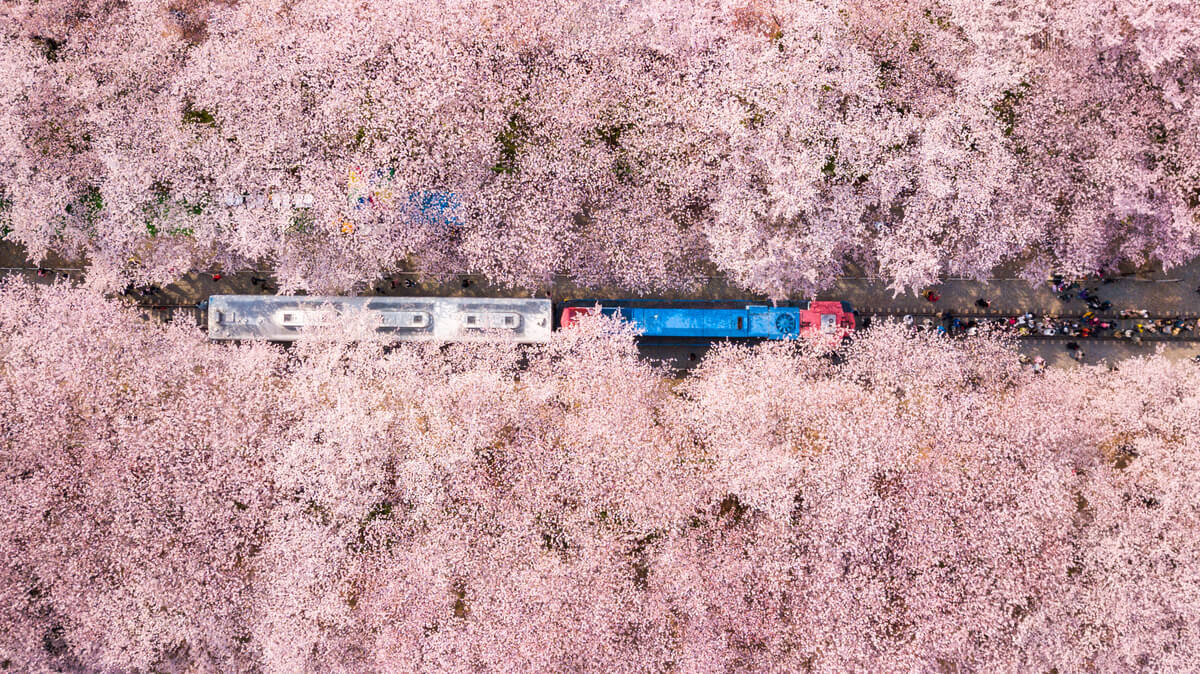
The best strategy for exploring South Korea is to book a flight to Seoul. From there, you can travel across the country to Busan, stopping at several interesting points along the way. You can then book a flight out of Busan or make your way back to the capital via train or bus.
- Best Travel Itineraries for Backpacking South Korea
- Places to Visit in South Korea
- Top Things to Do in South Korea
- Backpacker Accommodation in South Korea
- South Korea Backpacking Costs
- And Speaking of Plastic… Get an eSIM For South Korea
- Best Time to Travel to South Korea
- Staying Safe in South Korea
- How to Get Into South Korea
- How to Get Around South Korea
- Working in South Korea
- What to Eat in South Korea
- South Korean Culture
- Final Advice Before Visiting South Korea
- Buy Us a Coffee!
Best Travel Itineraries for Backpacking South Korea
Wherever you decide to visit in South Korea will depend on your interests, and of course how much time you have. Here are a few different ideas for South Korea travel itineraries. I’ve included two different one-week itineraries and one jam-packed 2-week itinerary.
Backpacking South Korea 7-Day Itinerary #1: Seoul to Busan
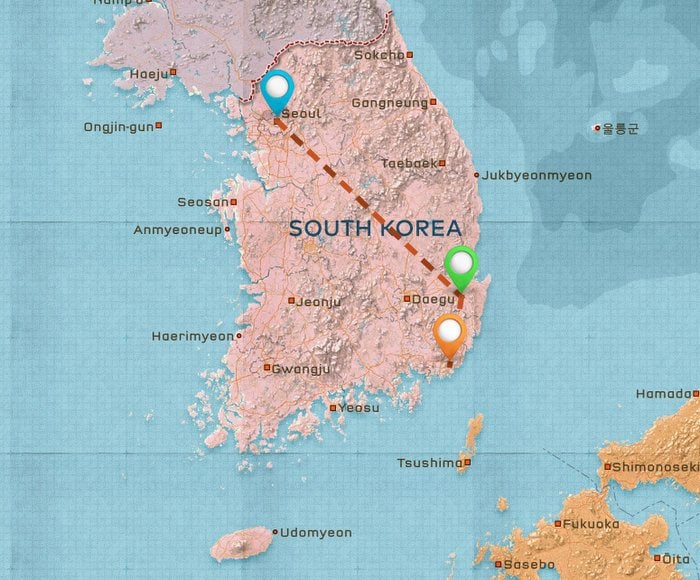
With just one week to spare in South Korea, your best bet is to travel across the country from Seoul to Busan with a stop in Gyeongju along the way. Since there’s so much to see and do, you should dedicate at least three days to the capital to start your trip.
Seoul is home to several ancient Korean palaces, the grandest of which is Gyeongbok-gung. In addition to visiting the palaces, you’ll want to check out some of the city’s museums, temples, markets, and parks. That’s more than enough for a couple of busy days backpacking in Seoul.
From Seoul, you can catch a train or bus to Gyeongju. This small city is home to many historic sites such as Tumuli Park – the final resting place of Shilla kings. It’s possible to do a whirlwind tour of the city, but you’ll enjoy it much more if you stay at least one night.
Finally, head to the coast and South Korea’s 2nd biggest city of Busan. Hopefully, you’re backpacking South Korea during the warmer months because most people come here to kick back and relax on the beach.
There’s lots more to see on a trip to Busan than the beach, though. You can fill your days exploring the city or hiking in the surrounding hills.
Backpacking South Korea 7-Day Itinerary #2: Seoul and Jeju
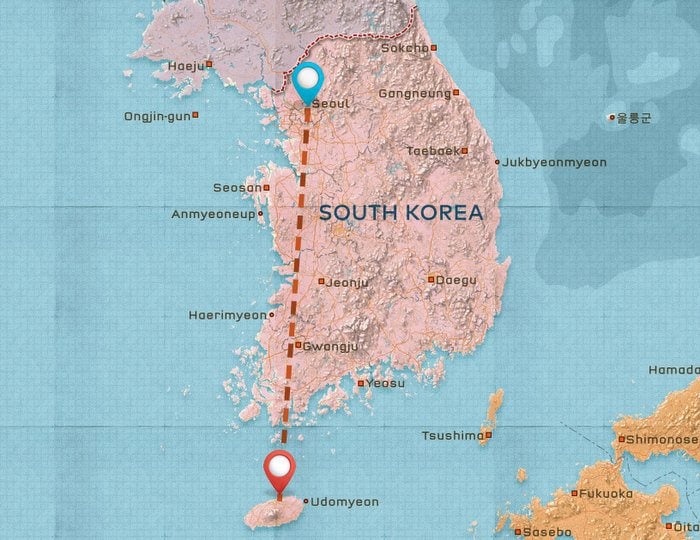
If you’re looking for more of a vacation vibe on your trip to South Korea, you’ll definitely want to add Jeju Island to your itinerary. With one week in South Korea, you can still start off with a 3-day itinerary in Seoul before just catching a quick flight to Jeju.
Since this trip is a bit more relaxing than the one outlined above, you might as well partake in Seoul’s rowdy nightlife. Night quickly turns to day here, especially on weekends when it seems like the whole city is out partying.
You may need a day to sleep in and recover if you really go hard on a night out in Seoul.
While Jeju may be known as South Korea’s “honeymoon island,” it’s still a great place for backpackers. For starters, you can hike the country’s highest peak at Hallasan. There are also caves, waterfalls, botanical gardens, and several trails leading to viewpoints. A few days full of adventure and beach-bumming in Jeju is a great way to cap off your trip.
Backpacking South Korea 14-Day Itinerary #1: Seoul to Busan to Jeju
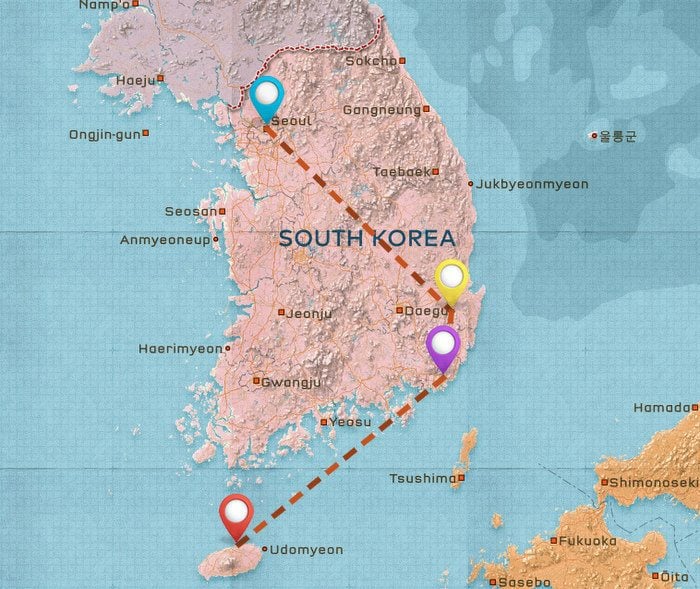
With an extra week in South Korea, you can take your time and linger in destinations. You can also add a few day-trips to mix it up and get out of the cities. Here’s a solid plan for 2 weeks in South Korea, starting again with Seoul.
If you’ve got two weeks in South Korea, I honestly recommend staying in Seoul for 4 or 5 days. It’s a huge city and more than half of the country lives here, so it’s definitely worth that much time. Since the city is so sprawling, it’s more enjoyable if you can spread your sightseeing out over a few days.
In addition to hitting the sights in town, you can tack on a day-trip or two. Of course, the most popular is visiting the DMZ. If that’s not your thing, you can also get out of the concrete jungle and hike around the beautiful Bukhansan National Park.
Rather than breeze through Gyeongju, you can allot two full days to exploring the city and the surrounding sights. The same goes for staying in Busan, as you can afford to spend a few extra nights there with two weeks in South Korea.
From there, it’s a short flight to Jeju. After a few days staying on the island, it’s time to head back to Seoul to catch your flight out.
Want to save money on accommodation?
Enjoy 15% OFF on stays ALL around the world.
Places to Visit in South Korea
To help you out with your itinerary backpacking through South Korea, I’ve gone ahead and broken down my favourite places to go right below. From bustling metropolises to far off the beaten trail, there’s heaps to do! Starting with…
Backpacking Seoul
Pretty much everyone who visits South Korea ends up in the capital city of Seoul. The city proper is home to nearly 12 million, while the greater metro area has a whopping 25 million. That’s more than half of the country’s population in one city alone!
This is a city that seems to have one foot firmly planted in the past while the other steps eagerly toward the future. Ancient palaces sit across the street from shiny new skyscrapers.
Seoul’s urban areas are an amalgamation of the old with the new, and there are heaps of cool places to see around the city. Peaceful Buddhist temples exist nearby bustling nightlife districts. Seoul is indeed a fascinating city of contrasts and surprises.
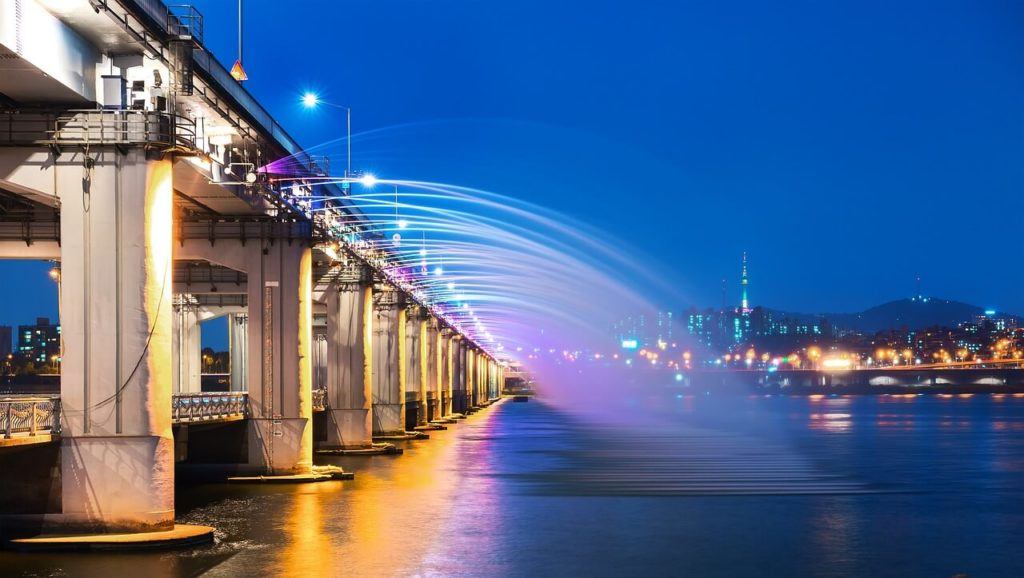
While in Seoul, you’ll be able to dive into the history and culture of South Korea. Start your journey off by exploring the city’s ancient palaces. All of them are worth a visit, but you’ll definitely want to hit Gyeongbok-gung and Changdeok-gung.
Seoul is also home to several excellent parks. Koreans love getting outside exercise, so go ahead and join them.
Namsan Park is a popular place to visit while backpacking South Korea. Not only is it a great place for a stroll, but you’ll also find the Seoul Tower here for some of the best views of the city.
Wherever you go, be sure to do a lot of walking so you can work up an appetite and dig into lots of mouth-watering Korean food. From street food snacks to high-end restaurants and everything in between, there’s something tasty around every corner in Seoul.
Once the sun goes down, it’s time to party in Seoul. It’s not just the young whippersnappers partying out here either; you’re just as likely to see businessmen in suits downing glasses of soju as you are college kids.
Some of the best areas in the city to party in Seoul are Hongdae and Itaewon. The party goes late in these neighborhoods, so be sure to pace yourself.
Aside from sightseeing and eating/drinking your way across the city, you may also want to embark on a few day-trips from Seoul. Popular options include hiking in the national park just north of the city or paying a visit to the DMZ.
If you’d rather just chill out, spend a night in one of the city’s many jimjilbang (spas) – the perfect place to relax. Plenty of them are even 24-hour. You could just skip booking a backpacker hostel in Seoul and instead sleep in the sauna… I did!
Backpacking Busan
The ROK’s 2nd largest city, Busan, is mostly known for its beaches, as Koreans flock here over the summer holiday for sun and sand. That’s not all that’s going on in Busan, though. The city is also home to some amazing temples, nature reserves, and hot springs.
A must-see place in Busan is the ancient Beomeosa Temple. It’s a slightly challenging uphill hike, but you’re rewarded with some incredible views of the city. Speaking of hiking, there are several trails that are easily accessible from the city, including Jangsan Mountain.
If you’d rather skip the hills, check out Yonggungsa – the Dragon Palace Temple – that’s perched along the coastline. Seeing the beautifully designed temple with the waves crashing against the shore is a can’t-miss when visiting Busan.
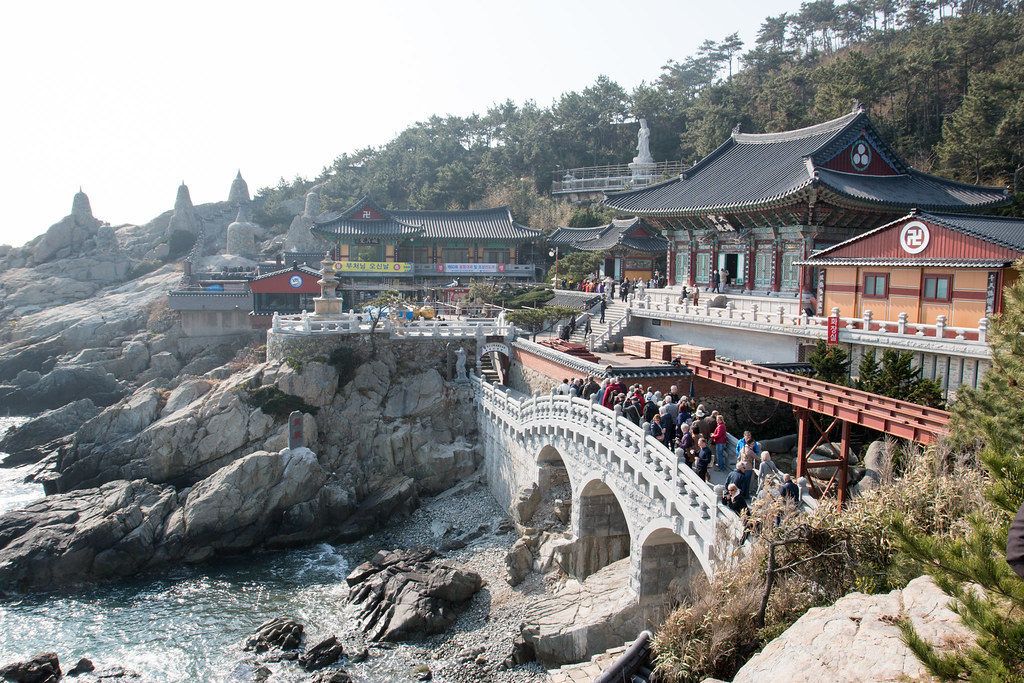
Photo: Gary Bembridge (Flickr)
Busan is also famous for its many festivals throughout the year. The Busan International Film Festival runs for the first ten days of October and draws quite the crowd.
In August, you can rock out at the city’s International Rock Festival. Make sure you book in at one of Busan’s backpacker hostels early though – it gets busier around festival time!
Thanks to its location on the coast, Busan cooks up some tasty seafood. Head to the Jagalchi Fish Market to pick from the cat day’s catch and have it cooked up at one of the many restaurants.
Those with an adventurous palate might try bokguk, which is a soup made from the extremely poisonous pufferfish. If not, you can always play it safe and stick with the cod.
Oh, and there are also some great great Airbnbs in Busan too.
Backpacking Jeju Island
Most Koreans choose to vacation on Jeju Island. It’s definitely the top choice for honeymooners, but you don’t have to be a newlywed to enjoy a trip here. Jeju Island is for backpackers as well; there are plenty of social hostels on Jeju Island to meet other travellers at.
Home to South Korea’s tallest mountain, the longest lava tube in the world, plenty of sandy beaches, some quirky theme parks, and even some chill hikes, Jeju Island is a pretty epic place to visit.
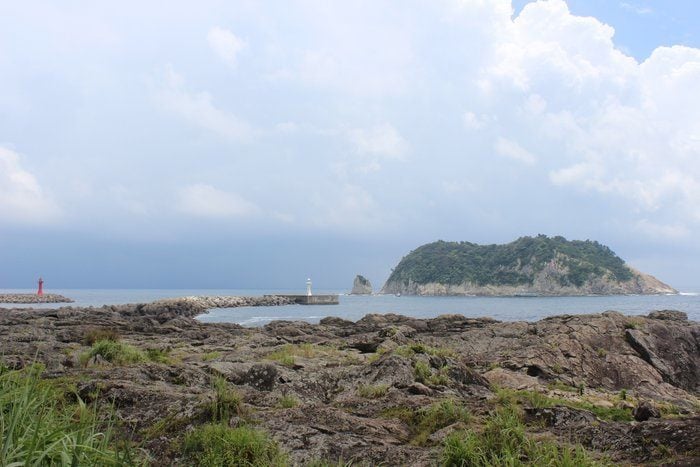
Photo: Sasha Savinov
You can even check out the filming locations of super popular Korean television shows here, if you’re into that sort of thing.
Perhaps one of the most interesting aspects of Jeju Island is its culture, which is quite different from the mainland. For one it is matriarchal; here you’ll surely spot the famed haenyo (women divers) who dive without any oxygen tanks to depths of 10-20 meters in search of squid, octopus, clams, and other seafood.
Be sure to bring your hiking shoes when you visit Jeju. In addition to tackling the dormant volcano Hallasan, you can also enjoy coastal trails that wrap around the island. After a nice hike, you can kick back on a beach and order up a tasty plate of seafood. Life is good on Jeju Island!
Backpacking Gyeongju
If you’re interested in learning more about Korean history and culture, then Gyeongju is the perfect place to visit. It’s also a great way to break up the journey from Seoul to Busan.
Gyeongju was the capital of the Silla Dynasty, which lasted for 1,000 years and played a very important role in Korean history. The historic area of Gyeongju was actually the first site to be nominated a UNESCO World Heritage status in South Korea.
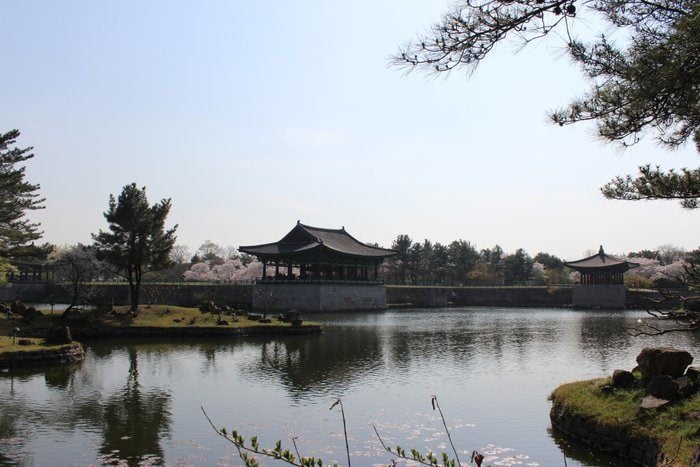
Photo: Peter Savinov
Here you can visit the beautiful Bulguksa Temple, which just might be the most impressive temple in the country. You should also check out Seokguram Grotto for an excellent example of Silla art and architecture.
With a few extra days in Gyeongju, you can enjoy some hiking in the national park, stroll around Bomun Lake, pay a visit to the royal tombs, and much more.
Getting around the city is a breeze thanks to the bus system and bike rentals, and most places have English signs despite the fact that few foreign tourists visit.
Backpacking Daegu
The main reason to stop by South Korea’s 4th largest city is to hike on Palgongsan. This mountain is just 20km from downtown and features several different hiking routes.
There are Buddhist statues and pagodas all over the mountain. In fact, there’s one statue believed to grant you one wish in your life, if you make it there. If you make it all the way up here, you might as well give it a shot!
In the city, you can also find plenty of parks that are pleasant to explore for a few hours. In Apsan Park, you can hike or take a cable car up to the observatory for great views of the city.
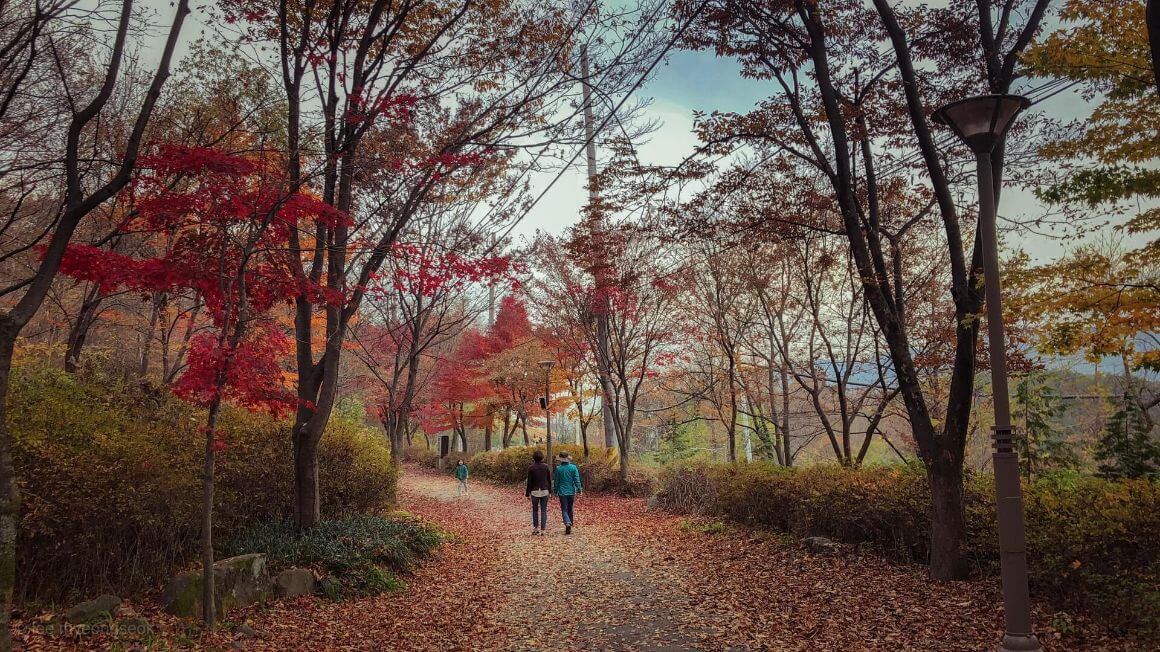
Once the sun goes down, you can head to the Banwoldang part of the city to explore the food and bar scene; there are plenty of restaurants, bars, and clubs in this area.
If you visit on a weekend, this area is especially lively. You can also party hard in the university areas if you’re up for it.
Backpacking Jeonju
If you’ve had enough of South Korean cities, join the locals and head to a place like Jeonju. The main draw for travelling here is the Jeonju Hanok Village. With more than 700 traditional hanok homes, this is a great place to dive into traditional Korean culture.
The Hanok Village is especially lively during festivals and on weekends, so try to time your visit to experience Jeonju at its finest. During these busy times, you’ll find plenty of markets and street food stalls as well.
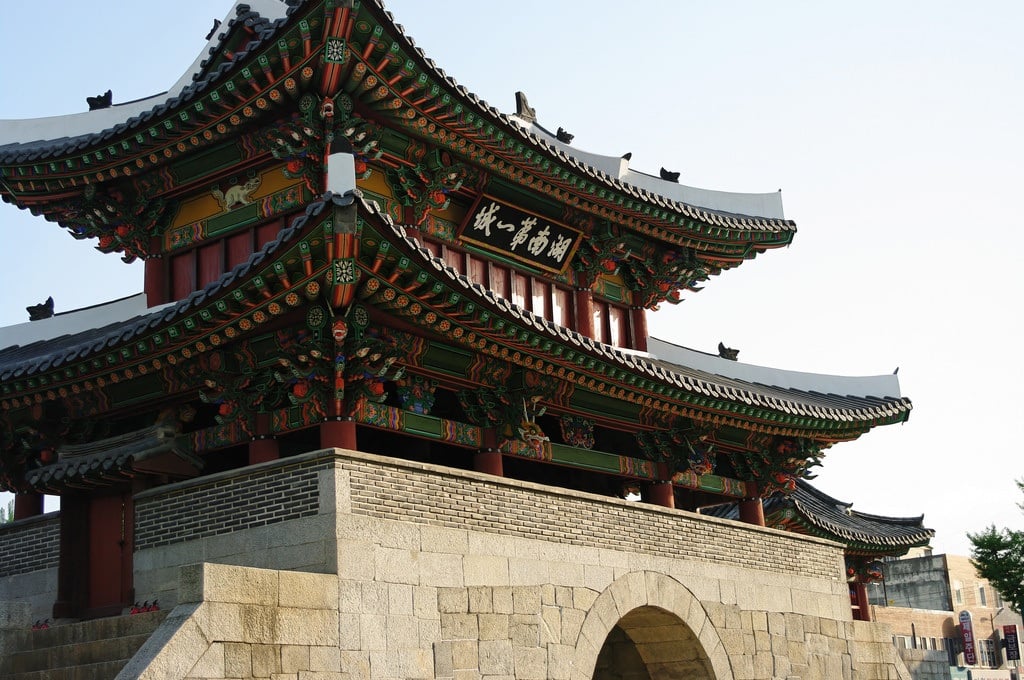
Speaking of food, Jeonju is thought to have the best bibimbap in the land. There seem to be restaurants cooking it on every corner, so dig into a big bowl of this Korean classic and judge for yourself.
Wash it down with some makgeolli, a traditional fermented rice liquor that this city is also famous for.
Getting Off the Beaten Path in South Korea
It really isn’t that hard to get off the beaten path in South Korea. Many travelers never even leave Seoul, so the second you step out of the capital you’re already there!
Admittedly, I’ve stayed very much on the beaten path in my travels to South Korea. My brother, on the other hand, lived there for a year and imparted some wisdom on me.
Gurye is a small town near Jirisan National Park, which is home to the highest peak on the peninsula. Here you can try Daesulgi sujebi – a soup made with river snails, a local specialty.
Danyang is another small town nestled between Woraksan and Sobaeksan National Parks with a river flowing through it. I didn’t see another foreigner the whole weekend there; it was all Korean people. It’s a perfect place for some Instagrammable photo ops in South Korea.
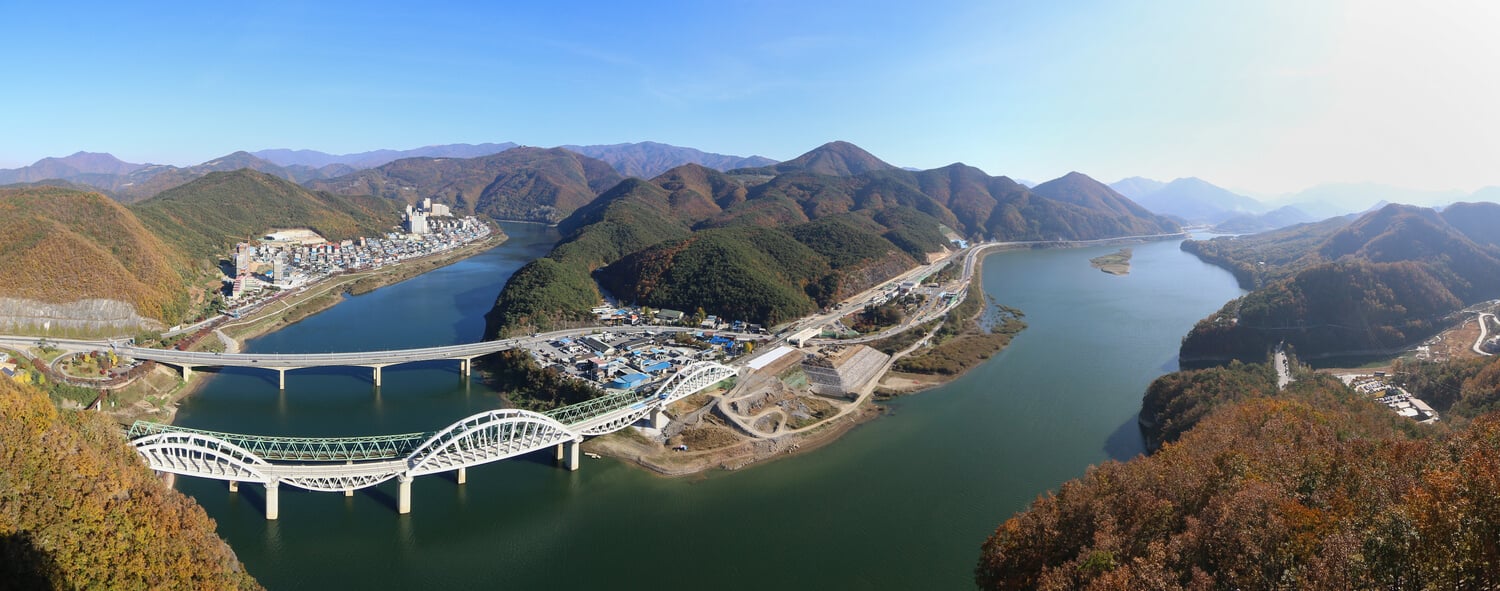
Also, look up the “Eight Views of Danyang” for some beautiful sights in the area. I saw some of them but wasn’t aware they were part of that list until my boss informed me Koreans go there for the eight views. Parasailing is popular in Danyang, though I didn’t do it.
Andong is a pretty unremarkable city but it’s near the Hahoe Folk Village which felt like a Korean version of the Shire. There’s also a nice Confucian Academy outside the town called Dosan Seowon, which is beautiful and peaceful.
Sokcho is a small city on the east coast near Seoraksan National Park. Considered one of the nicest places to see fall colors; there are beaches to see in the summer too.
Thank you to my brother Pip for those awesome recommendations! Be sure to add a few to your list if you want to experience South Korea outside of the big cities.
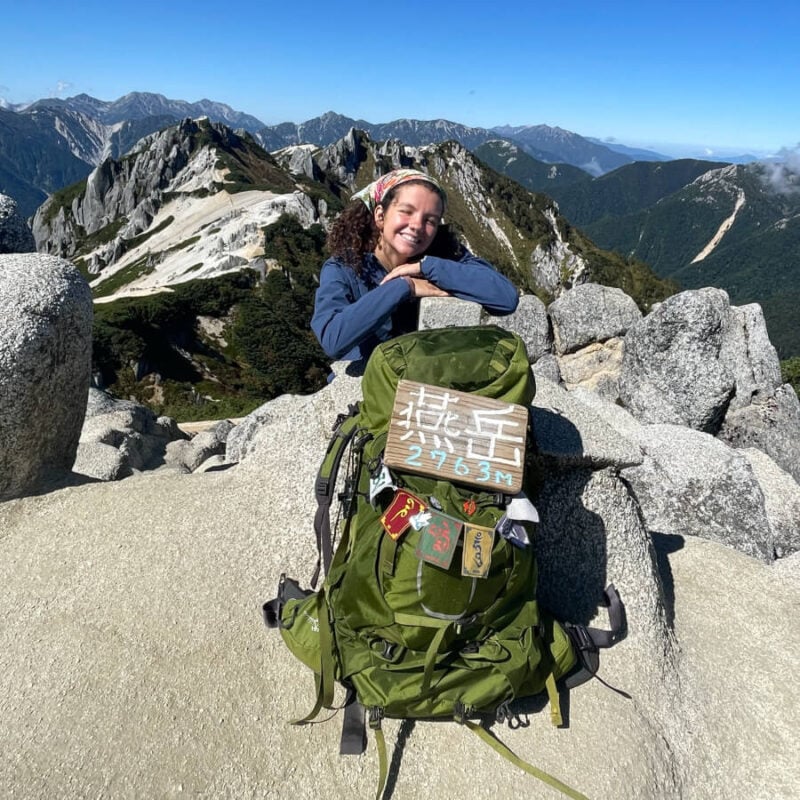
We’ve tested countless backpacks over the years, but there’s one that has always been the best and remains the best buy for adventurers: the broke backpacker-approved Osprey Aether and Ariel series.
Want more deetz on why these packs are so damn perfect? Then read our comprehensive review for the inside scoop!
View on Osprey View on REITop Things to Do in South Korea
With so much awesome stuff to do in South Korea, it can be hard to choose exactly what to do! However, I guarantee you that oince you step outside of Seoul, the country really opens up.
1. Explore the ancient palaces of Seoul
The Joseon Dynasty was the last kingdoms in South Korea lasting from 1392 all the way until 1910. It was during this time that Seoul became the capital.
The kings of the Joseon Dynasty had several grand palaces built in the city, and exploring the palaces is one of the best things to do in South Korea.
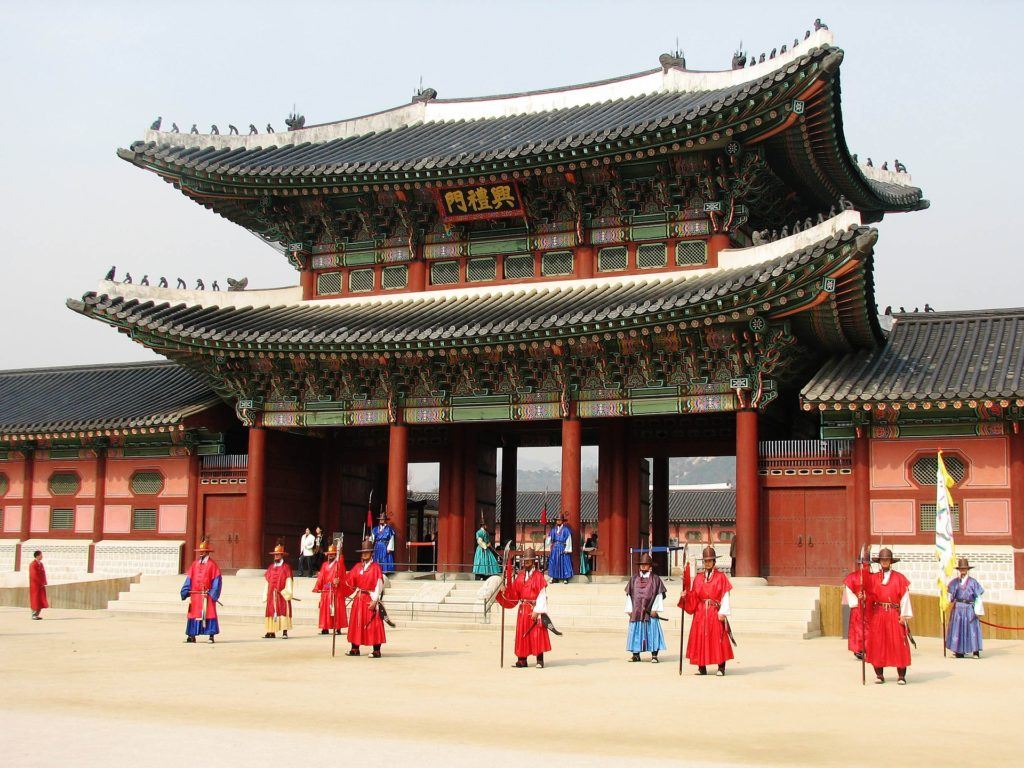
There are five grand palaces in Seoul, with the grandest being Gyeongbokgung. With a name meaning “Palace Greatly Blessed by Heaven,” you know they went all out when they built this one.
Be sure to catch the changing of the guard ceremony and sign up for one of the free guided tours, which run at 11am, 1:30pm, and 3:30pm.
2. Feast on Korean Food
One of the best things about backpacking South Korea is indulging in delicious Korean cuisine. Whether it’s the national dish of kimchi, a colourful bowl of bibimbap, or an epic feast at a Korean BBQ restaurant, your taste buds are in for a treat.
3. Spend a night in a jimjilbang
Seeing how people in South Korea love hiking up in the mountains so much, it should come as no surprise that another popular pastime is relaxing in a spa.
In Korean, these spas are known as jimjilbang, and they’re all over the place. A trip to a jimjilbang is an absolute must when backpacking South Korea. Experience the South Korean jimjilbang lifestyle!
You can bounce around between hot and cold tubs, saunas, and steam rooms, get a massage or a body scrub, grab some food and drink, and so much more. Broke Backpackers may want to visit one at night as you can crash in the sleeping room and save some money on accommodation.
4. Take a hike
Hiking is probably the most popular pastime among Koreans. It makes sense, considering that most people live in crowded cities yet most of the country is made up of mountains.
Koreans know what to take hiking: they’re very serious about their gear and are usually decked out in the freshest hiking attire. Just because you’re working up a sweat doesn’t mean you can’t look good!
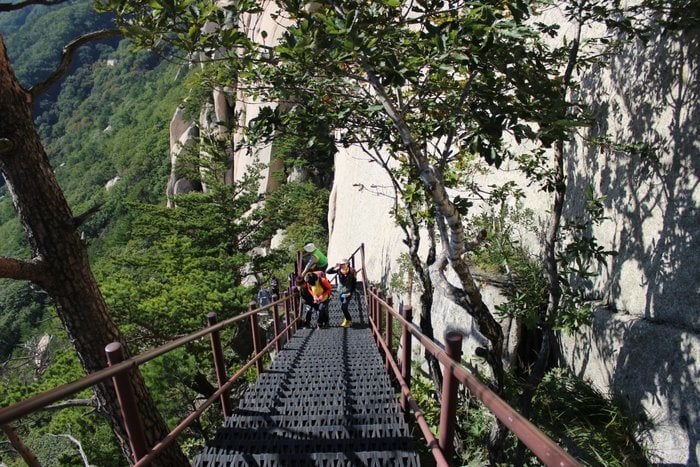
Photo: Peter Savinov
There are hiking trails all over South Korea ranging in difficulty and length. One of your best bets is hiking in Bukhansan, as it is easy to visit from Seoul. If you’re up for the challenge, you can tackle the country’s largest mountain, Hallasan on Jeju Island.
4. Take a tour of the DMZ
Many travelers who visit South Korea hope to see the DMZ (Demilitarized Zone) that has separated the North from South since the end of the brutal Korean War in 1953.
Here you can catch a glimpse into the “Hermit Kingdom” and learn more about the tense relations between the two Koreas. You’ll have to take a tour to get here, so be sure to shop around and check reviews.
6. Indulge in the seasonal sports
South Korea experiences all four seasons, meaning you can enjoy both summer and winter sports here. In the warmer months, that means hiking, cycling, swimming, and more. South Korea is also a great destination for skiing and snowboarding in the winter.
7. Visit a folk village
A fun way to get some insight into Korean history and culture is by visiting Minsok. Also known as the Korean Folk Village, this living museum is a bus ride away from Gangnam in Seoul.
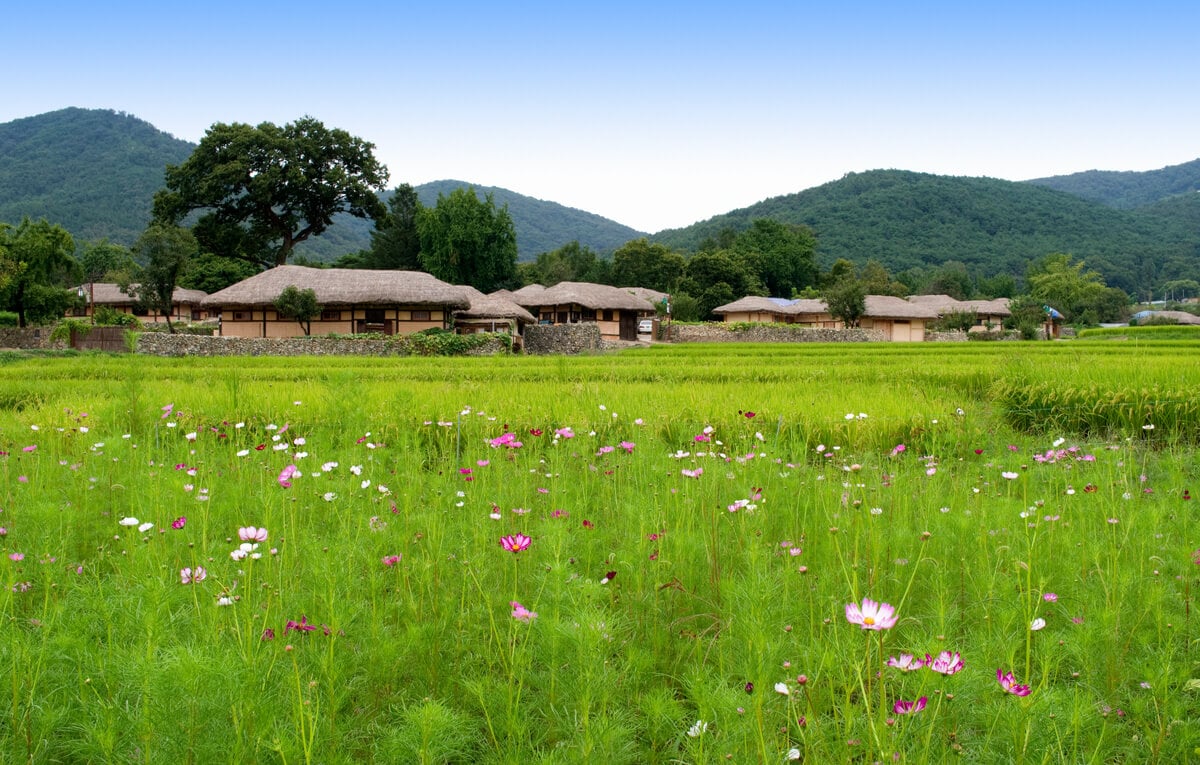
On a visit to the folk village, you can see old-school hanok homes, cultural performances, and maybe even watch a traditional Korean wedding.
It’s a fun place to come for the day to get out of the city and try something new.
8. Take part in a local festival
In South Korea, there are festivals to celebrate just about everything. You can try catching trout at an ice festival, watch the sky light up at a fireworks festival, or get down and dirty at a mud festival.
Of course, there are also plenty of traditional Korean festivals such as Chuseok as well as food and music festivals all throughout the year.
9. Enjoy an island getaway on Jeju
A quick flight from the mainland will get you to beautiful Jeju Island. Full of beaches, waterfalls, caves, folk villages, and even South Korea’s highest mountain, this little island will keep you plenty busy.
In addition to all of its natural wonders, Jeju is also home to some great things to do and some very eccentric tourist attractions. Take Loveland for example, a bizarre park full of risqué sculptures. Visiting this place will definitely make for some of the funniest photos from your trip.
10. Party hard in Seoul
Seoul is undoubtedly a party city. It seems like everyone likes to go out and get loose here, from college kids to briefcase-carrying businessmen. When visiting the Korean capital, you need to have at least one big night out.
Some of the most popular areas to party in Seoul include Hongdae and Itaewon. You’ll find tons of restaurants, bars, and clubs in each area. Start with dinner and drinks and see where the night takes you.
My guess is you’ll end up loudly singing karaoke and chugging down soju at around 4 AM with some people you just met.
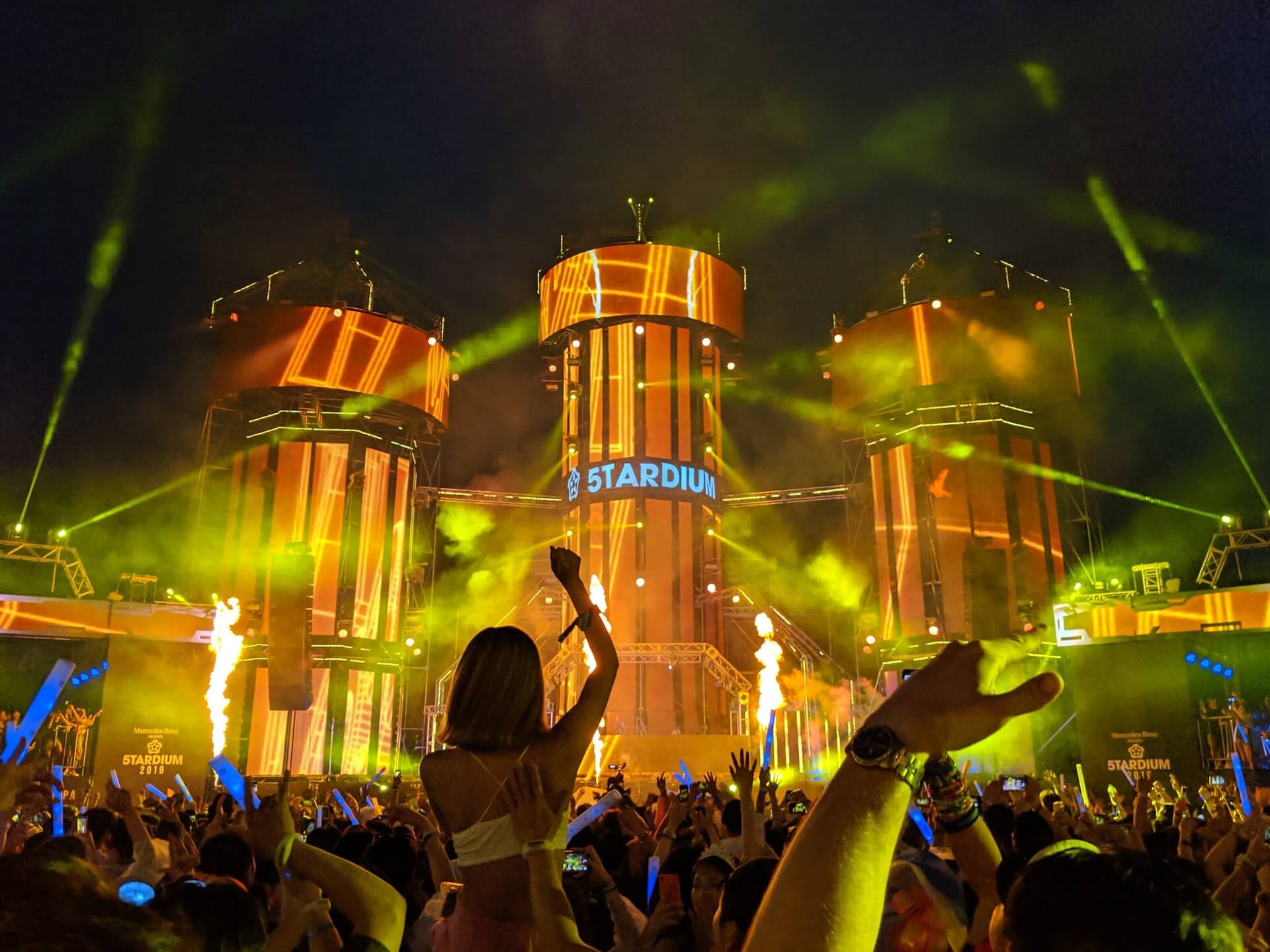
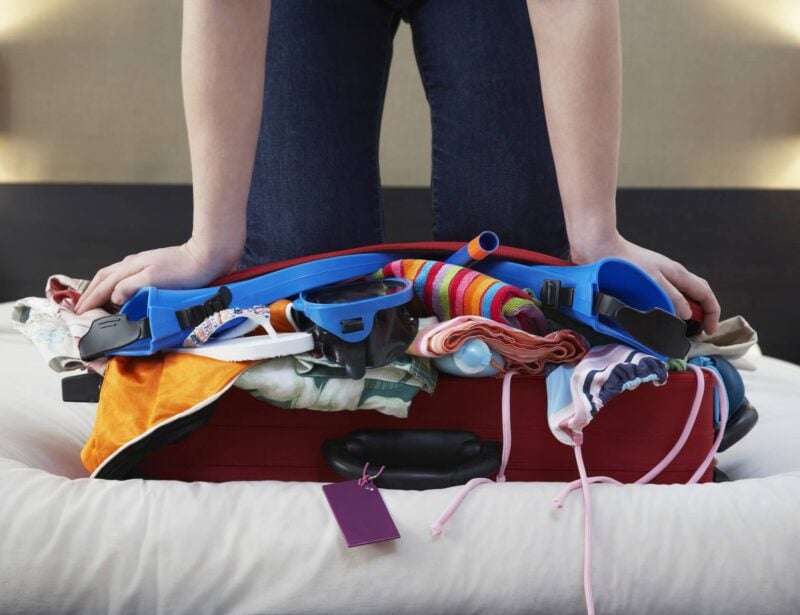
Wanna know how to pack like a pro? Well for a start you need the right gear….
These are packing cubes for the globetrotters and compression sacks for the real adventurers – these babies are a traveller’s best kept secret. They organise yo’ packing and minimise volume too so you can pack MORE.
Or, y’know… you can stick to just chucking it all in your backpack…
Get Yours Here Read Our ReviewBackpacker Accommodation in South Korea
Travelling South Korea is a great experience thanks in part to the many excellent backpacker hostels around the country. Especially in the big cities of Seoul and Busan, you’re spoiled for choice when it comes to hostels.
The Best Places to Stay in South Korea
| Destination | Why Visit! | Best Hostel | Best Private Stay |
|---|---|---|---|
| Seoul | Explore palaces, markets, street food, nightlife, and vibrant cultural experiences | Bunk Backpackers Guesthouse | Seoul Station R Guesthouse |
| Busan | Enjoy beaches, seafood, cultural sites, and scenic coastal landscapes in Busan. | Guest House Dear Moon | Toyoko Inn Busan Station No.1 |
| Jeju Island | Explore volcanic landscapes, waterfalls, beaches, and unique South Korean culture. | ttottot Jeju Backpackers | ARA Palace Hotel |
| Gyeongju | Discover ancient ruins, historic sites, museums, and traditional Korean culture. | Blueboat Hostel Gyeongju | Gyeongju Momojein Guesthouse |
| Daegu | Experience modern architecture, visit markets, enjoy local cuisine, and culture. | Bomgoro Guesthouse | Aega Hanok Guesthouse |
| Jeonju | Savor traditional cuisine, explore Hanok Village, and delve into cultural heritage. | Nearest Guesthouse | Yangsajae |
South Korea Backpacking Costs
The cost of travel in South Korea is somewhere in the middle. It’s definitely cheaper than North America and Western Europe, but more costly than backpacking in Southeast Asia.
While it’s possible to get by on a daily budget of around $30-35, you’ll be more comfortable if you can allot $45-50 a day.
For getting around South Korea, you’ll obviously spend more if you choose to fly or take high-speed trains. That being said, you can score flights from Seoul to Busan for as little as $35, which is actually cheaper than taking the high-speed train, which costs $57.
Catching a bus is substantially cheaper and really doesn’t take that much longer.
You can find a dorm room in a nice hostel for around $10-15 a night depending on where you are staying. Couples or groups may want to look into private rooms, which won’t cost much more per person. You can also find some great deals on places on Airbnb; Seoul’s Airbnb scene is wicked and a total draw for the lovers of high-flying city life!
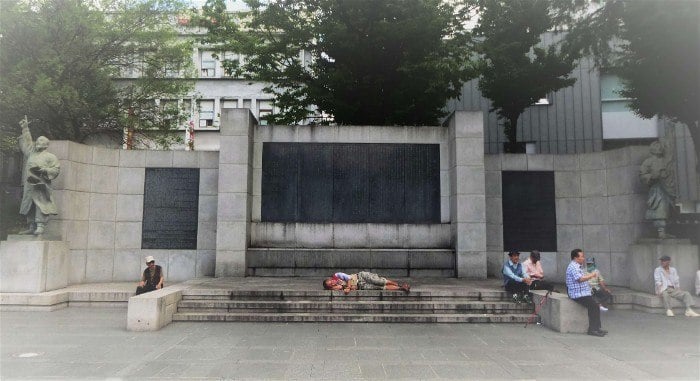
Photo: @themanwiththetinyguitar
When it comes to eating out, you can find super cheap street food or splurge on a fancy high-end restaurant. The choice is yours, my friend. On the budget end of the spectrum, it’s possible to find a decent meal for $3-4. You could also spend a little more and fill up on an awesome Korean BBQ.
There are plenty of free things to do in South Korea, such as going for a hike, strolling around the local park, and wandering the streets. Even the most famous sights in the country don’t cost that much. You can get a ticket to the Gyeongbokgung Palace in Seoul for just under $3.
It is worth setting aside some money for some bigger ticket items, like a flight to Jeju Island, ski life ticket, or South Korean spa!
For more budget tips, head on over to our guide breaking down South Korea’s expenses.
A Daily Budget in South Korea
| Expense | Broke Backpacker | Frugal Traveler | Creature of Comfort |
|---|---|---|---|
| Accommodation | $7-$14 | $15-$23 | $25+ |
| Food | $6-$10 | $11-$18 | $20+ |
| Transport | $4-$9 | $10-$18 | $20+ |
| Nightlife Delights | $3-$8 | $9-$14 | $15+ |
| Activities | $0-$10 | $11-$20 | $25+ |
| Total per day: | $20-$51 | $56-$93 | $105+ |
Money in South Korea
South Korea’s currency is the Won. Find out how much your money is worth today by using the up-to-date converter below.
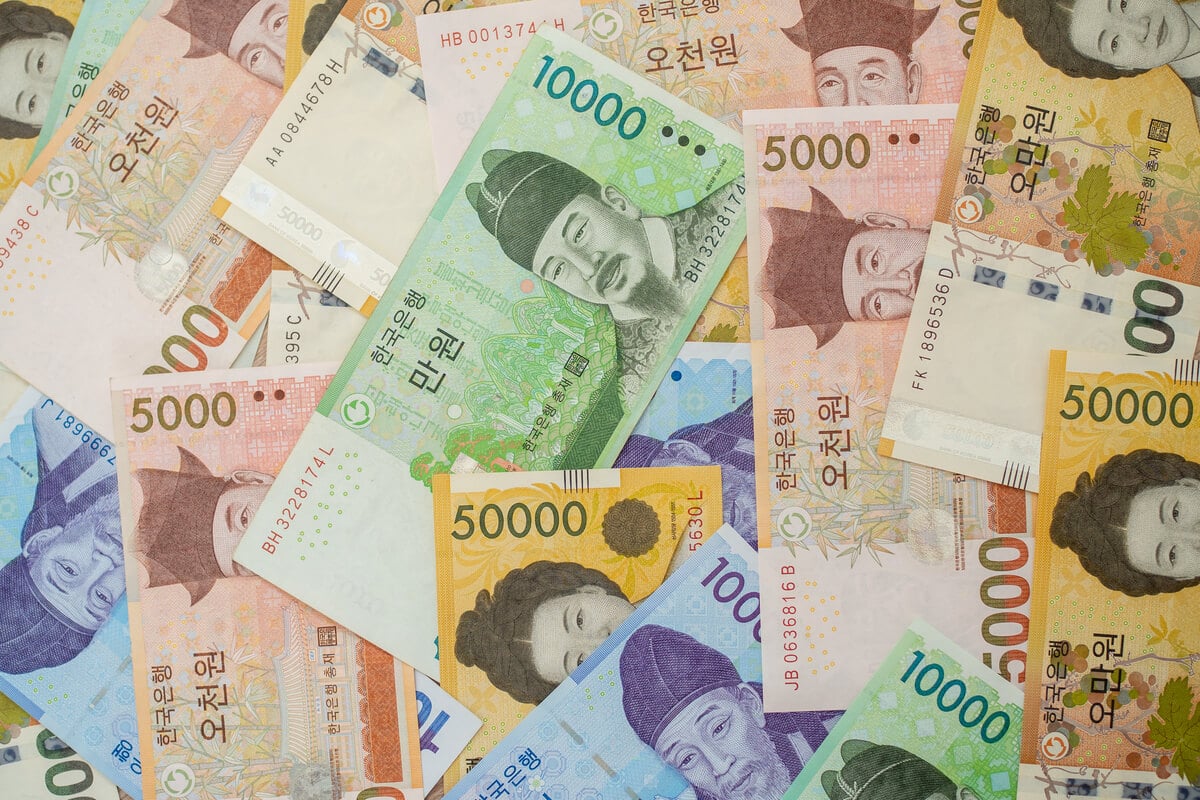
ATMs are widely available in South Korea and many businesses accept credit cards, so you really don’t have to worry about being able to pay for things when backpacking South Korea. That said, you are dealing with high denominations – I’d suggest wearing a solid travel money belt when kicking around the cities.
Travel Tips – South Korea on a Budget
Visiting South Korea on a shoestring budget is totally possible – it’s just about knowing the art of budget backpacking!
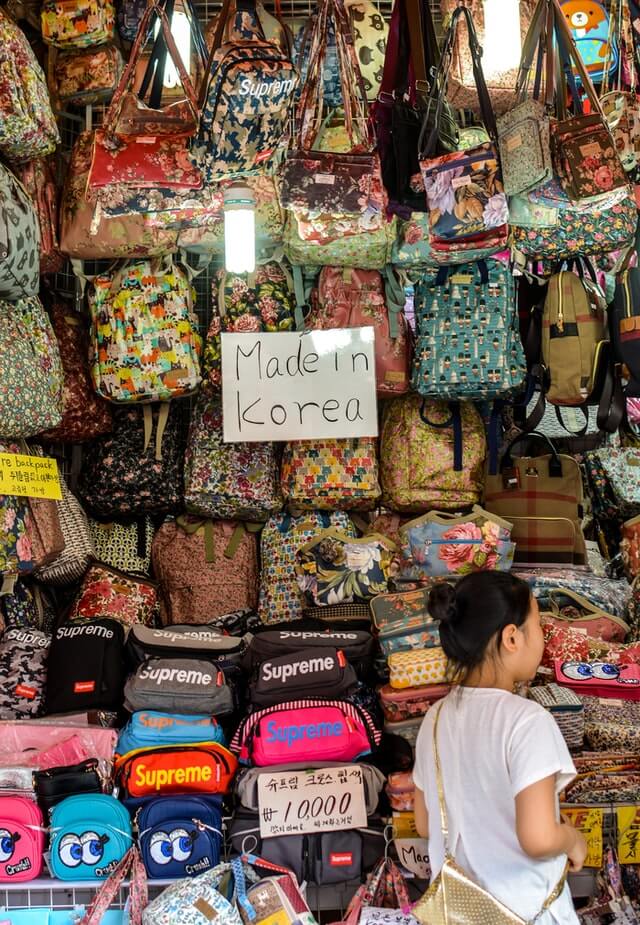
- Camp: It’s most definitely possible outside of the cities, and it’s totally possible in the cities too (provided you find a good spot). Make sure you bring your best backpacking gear and prepare for some nights under the stars!
- Cook your own food: If you are on a tight budget, you can save money by cooking your own food. Staying places with a kitchen or packing a cooker is the way to go.
- Check the convenience stores – Much like Japan’s rabid konbini culture, the convenience stores in South Korea (7-Eleven, GS25, etc.) are mega-cheap and a haven for backpackers, uni students, penny pinchers alike!
- Couchsurf: If you want to save some dough on accommodation, it’s worth it to look for a host on Couchsurfing. Traveling by Couchsurfing is a great way to make some real friendships and see this country from the perspective of locals.
Why Should You Travel to South Korea with a Water Bottle?
Plastic washes up on even the most pristine beaches… so do your part and keep the Big Blue beautiful!
You aren’t going to save the world overnight, but you might as well be part of the solution and not the problem. When you travel to some of the world’s most remote places, you come to realise the full extent of the plastic problem. And I hope you become more inspired to continue being a responsible traveller.
STOP USING SINGLE-USE PLASTIC! If you’d like some more tips on how to save the world.
Plus, now you won’t be buying overpriced bottles of water from the supermarkets either! Travel with a filtered water bottle instead and never waste a cent nor a turtle’s life again.
Drink water from ANYWHERE. The Grayl Geopress is the worlds leading filtered water bottle protecting you from all manner of waterborne nasties.
Single-use plastic bottles are a MASSIVE threat to marine life. Be a part of the solution and travel with a filter water bottle. Save money and the environment!
We’ve tested the Geopress rigorously from the icy heights of Pakistan to the tropical jungles of Bali, and can confirm: it’s the best water bottle you’ll ever buy!
View on REI Read the ReviewAnd Speaking of Plastic… Get an eSIM For South Korea
You know those tiny pieces of plastic you used to use to connect yourself to the internet abroad? Sim Cards I think they were called? Well yeah, we’re ditching those as well.

These days, wherever you go in the world an eSIM is by far the best way to stay connected from the minute you land. You can download an eSim before you leave home and then activate it when you are still sitting on the plane waiting to disembark.
You skip all the hassle of trying to figure out different providers and navigating airport prices to make sure you’re not getting scammed.
Of all the many eSim providers out there, we suggest Jetpac. Jetpac works just like an app: you download it, pick your plan, and BOOM! You’re connected before the pilot says you can stand up.
JetPac eSim Packages For South Korea
1GB – 4 Days – $1
5GB – 30 Days $15
10GB – 30 Days – $23
Best Time to Travel to South Korea
South Korea is home to all four seasons, so the best time to travel really depends on what kind of weather you prefer and what you hope to do while you’re backpacking South Korea.
Summer (June-August) can be hot and humid, while winter (December-February) can be bitterly cold and dry. If you plan to hit the beach or the slopes, these seasons are just fine.
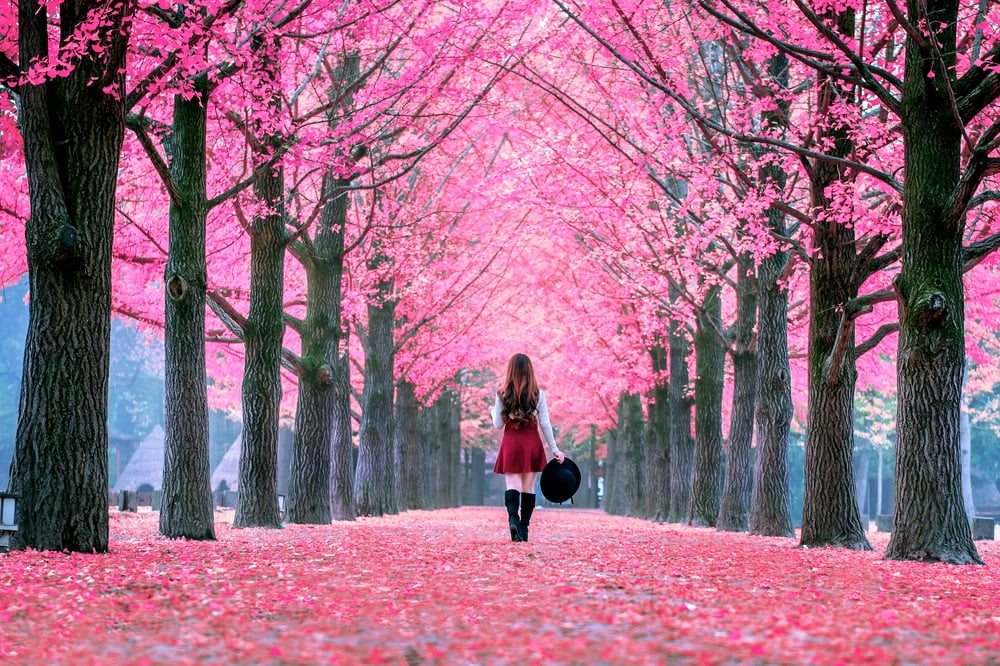
Those who prefer moderate weather will want to visit in either the spring or the fall. Both seasons are typically sunny and dry, allowing you to spend plenty of time outside comfortably.
If you want to see the cherry blossoms in bloom, you’ll want to visit between mid-March and mid-April.
Festivals in South Korea
South Korea has countless festivals that span over the entire year:
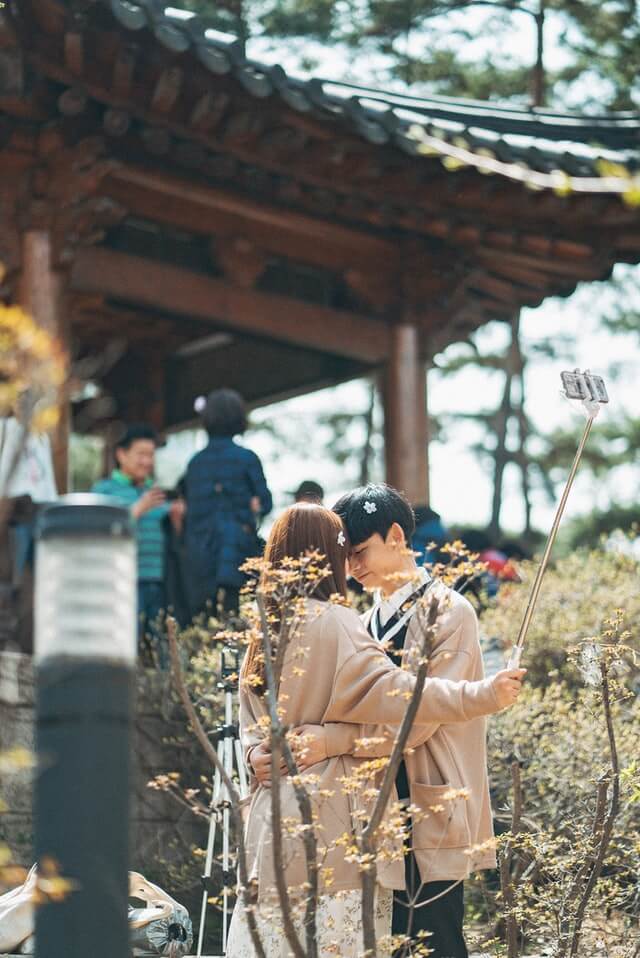
- Seollal (the Lunar New Year) – One of the most important holidays in the country and a very festive time. South Korea’s New Year takes place around late January – February.
One interesting thing about Korean New Year is that all people add a year to their age on this day rather than their birthday. - Chuseok – Another super important festival in Korean culture, this harvest festival occurs on the 15th day of the 8th lunar month during the full moon. On this day, Koreans visit their ancestral hometown and partake in a massive feast of traditional food.
- Yudu – Another of the many other interesting festivals in South Korea. On this day, people try to drive away bad luck and spirits by bathing and washing their hair. People also eat long noodles for a long and prosperous life.
- Chopail – People also celebrate the day of Buddha’s birth by hanging up lanterns and visiting a temple.
As many Koreans are Christian, Christmas and Easter are also big holidays.
What to Pack for South Korea
What you pack for your adventure backpacking South Korea depends mostly on what time of year you go. The country experiences all four seasons, so you’ll need to take the weather into consideration. It can get very hot in the summer and super cold in the winter, so you’ll want to be prepared.
How you pack also depends on what you plan to do there. Hiking is huge in South Korea, so it’s a good idea to pack good hiking shoes and other gear. If you’re visiting in the winter, you might want to bring your ski/snowboard gear to hit the slopes.
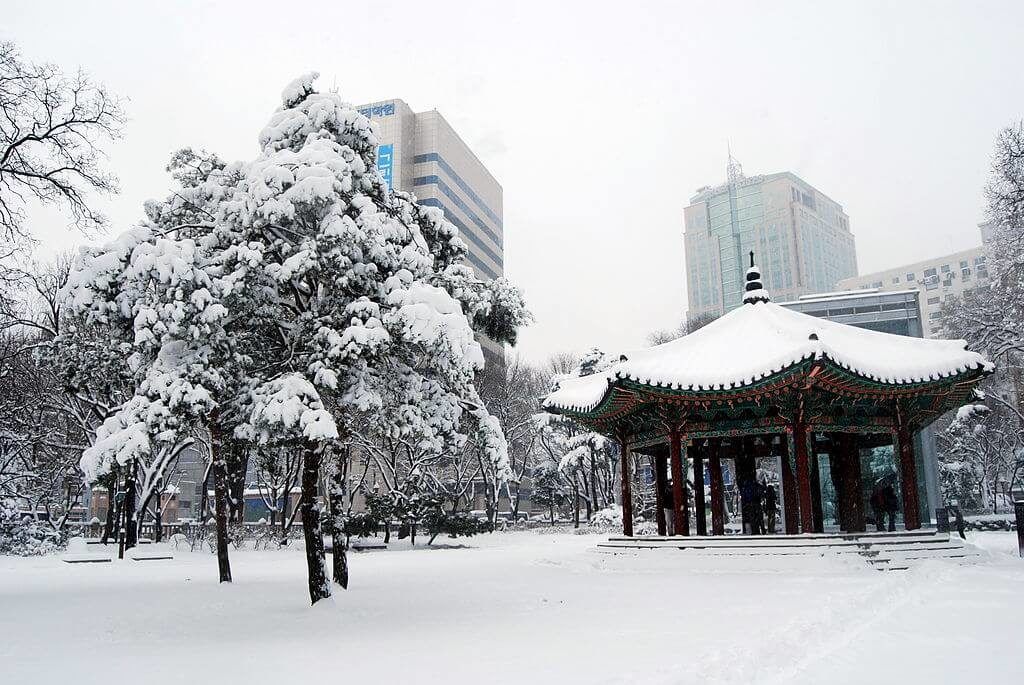
Make sure you get your backpacking packing list right! On every adventure, there are six things I never go travelling without:
Ear Plugs
Snoring dorm-mates can ruin your nights rest and seriously damage the hostel experience. This is why I always travel with a pack of decent ear plugs.
Hanging Laundry Bag
Trust us, this is an absolute game changer. Super compact, a hanging mesh laundry bag stops your dirty clothes from stinking, you don’t know how much you need one of these… so just get it, thank us later.
Sea To Summit Micro Towel
Hostel towels are scummy and take forever to dry. Microfibre towels dry quickly, are compact, lightweight, and can be used as a blanket or yoga mat if need be.
Monopoly Deal
Forget about Poker! Monopoly Deal is the single best travel card game that we have ever played. Works with 2-5 players and guarantees happy days.
Grayl Geopress Water Bottle
Always travel with a water bottle! They save you money and reduce your plastic footprint on our planet. The Grayl Geopress acts as a purifier AND temperature regulator. Boom!
Staying Safe in South Korea
South Korea is safe to travel. This is a very safe country where you have very little to worry about.
Even petty theft and pickpocketing aren’t really a big concern here. Of course, you should still be mindful of your things, especially on crowded streets or public transport. Make sure to hide your money when travelling around.
Foreigners who run into trouble here usually do so as a result of drunkenly starting arguments or fights. Basically, don’t be an idiot and you’ll be fine. If you’re out and an argument starts, just use some common sense and walk away.
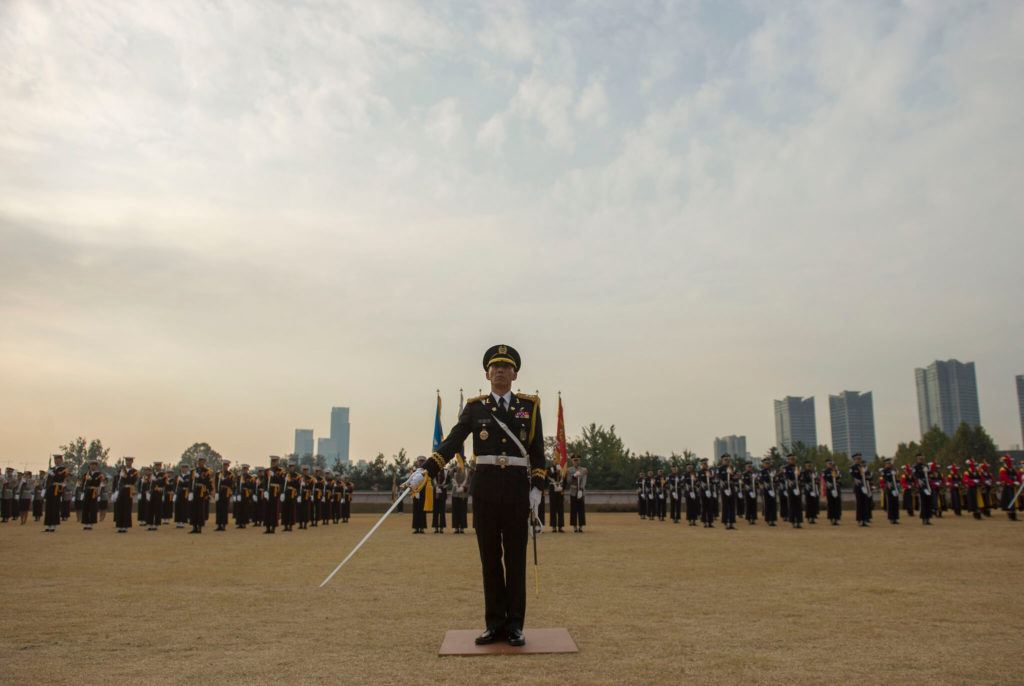
Check out the travel tips in our Backpacker Safety 101 post for advice on staying safe whilst backpacking.
Sex, Drugs, and Rock ‘n’ Roll in South Korea
If you’re a foreigner in South Korea whose single and ready to mingle, just be aware of a few things. First of all, there are definitely plenty of Korean girls with foreign boyfriends. That being said, it’s a very homogenous country where many people still look down on other kinds of relationships.
I remember reading a blog by a guy who lived there several years and had a local girlfriend. Once he finally started to pick up the language, he was incredibly upset to hear what random people out in public said about seeing them together.
As a backpacker passing by, you may not encounter such problems. You might, however, find language barriers and cultural differences as an obstruction to your desires.
Prostitution is technically illegal in South Korea, but there are plenty of red-light districts in the country that seem to operate just fine. Exercise caution (in more ways than one) if you choose to go this route.
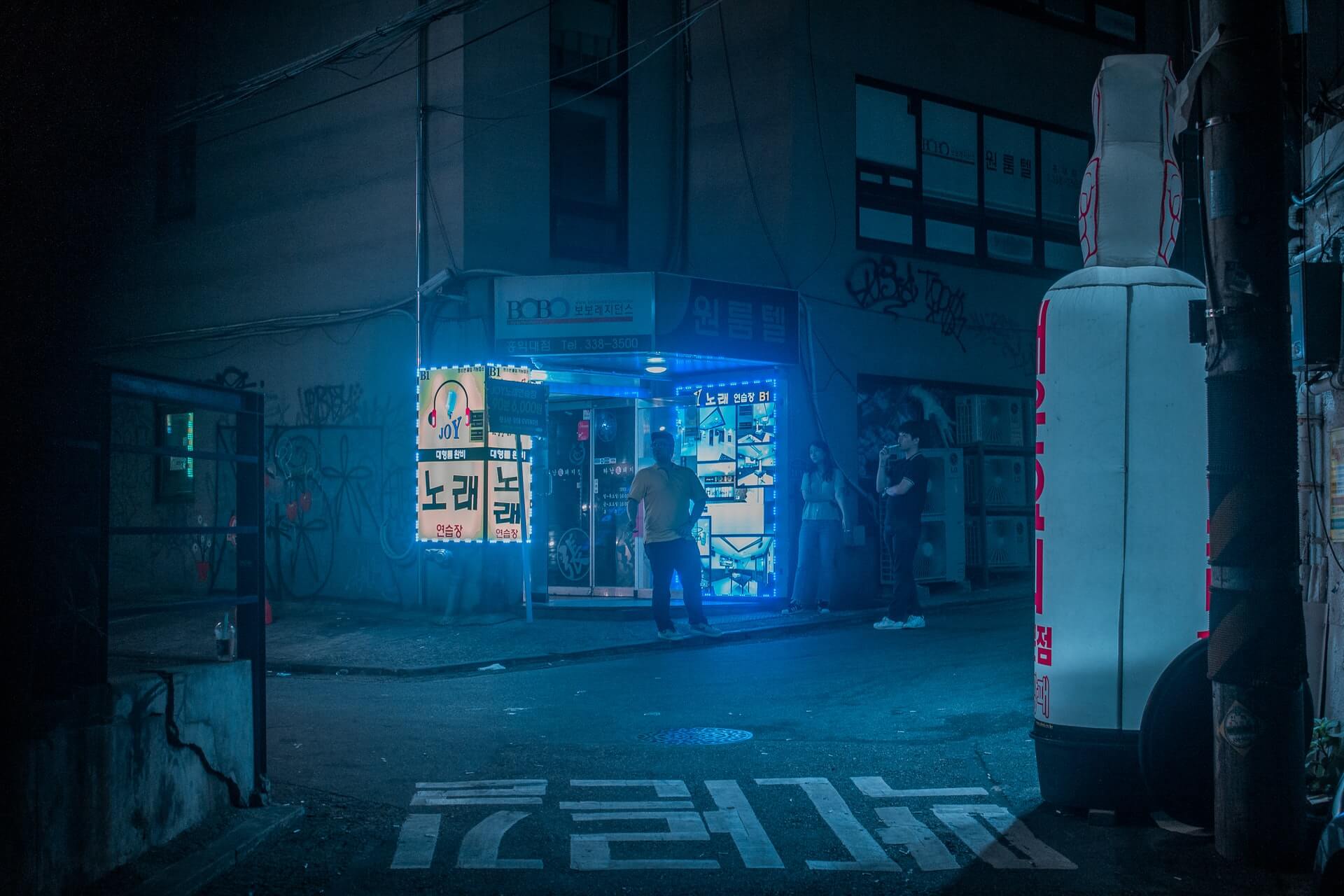
When it comes to drugs in South Korea, my advice is to steer clear. I love sparking a fat doobie as much as the next stoner, but it’s not worth it here.
Drug laws are pretty strict, and they love making examples out of foreigners who choose to ignore their laws. Are there drugs around? Sure. I just wouldn’t bother looking for them. Stick to booze here and save it for your next trip to Colorado.
Speaking of booze, Koreans definitely love to party. In fact, Koreans are among the heaviest drinkers in the world. Because of strict social norms at home and in the workplace, people tend to get quite loose when they go out.
The national drink of South Korea is soju, a clear spirit that’s usually about 20%. Most of the time, people just drink it straight, but sometimes a little soju is poured into a cup of beer to really get the party started. It’s not that strong, but it creeps up on you after several cups!
Travel Insurance for South Korea
A wise man once said that if you can’t afford travel insurance, you can’t really afford to travel! Do invest in good backpacker insurance sorted before you head off on an adventure!
ALWAYS sort out your backpacker insurance before your trip. There’s plenty to choose from in that department, but a good place to start is Safety Wing.
They offer month-to-month payments, no lock-in contracts, and require absolutely no itineraries: that’s the exact kind of insurance long-term travellers and digital nomads need.
SafetyWing is cheap, easy, and admin-free: just sign up lickety-split so you can get back to it!
Click the button below to learn more about SafetyWing’s setup or read our insider review for the full tasty scoop.
How to Get Into South Korea
Most visitors to South Korea arrive at the Incheon International Airport outside of Seoul. There are direct flights to and from this airport from cities all over the world. You can also fly into Busan if you’re traveling to South Korea from other points in Asia.
Entry Requirements for South Korea
Citizens from over 115 countries are allowed to enter South Korea visa-free. The length of stay varies – Canadians get the jackpot of a maximum 180-day in the country.
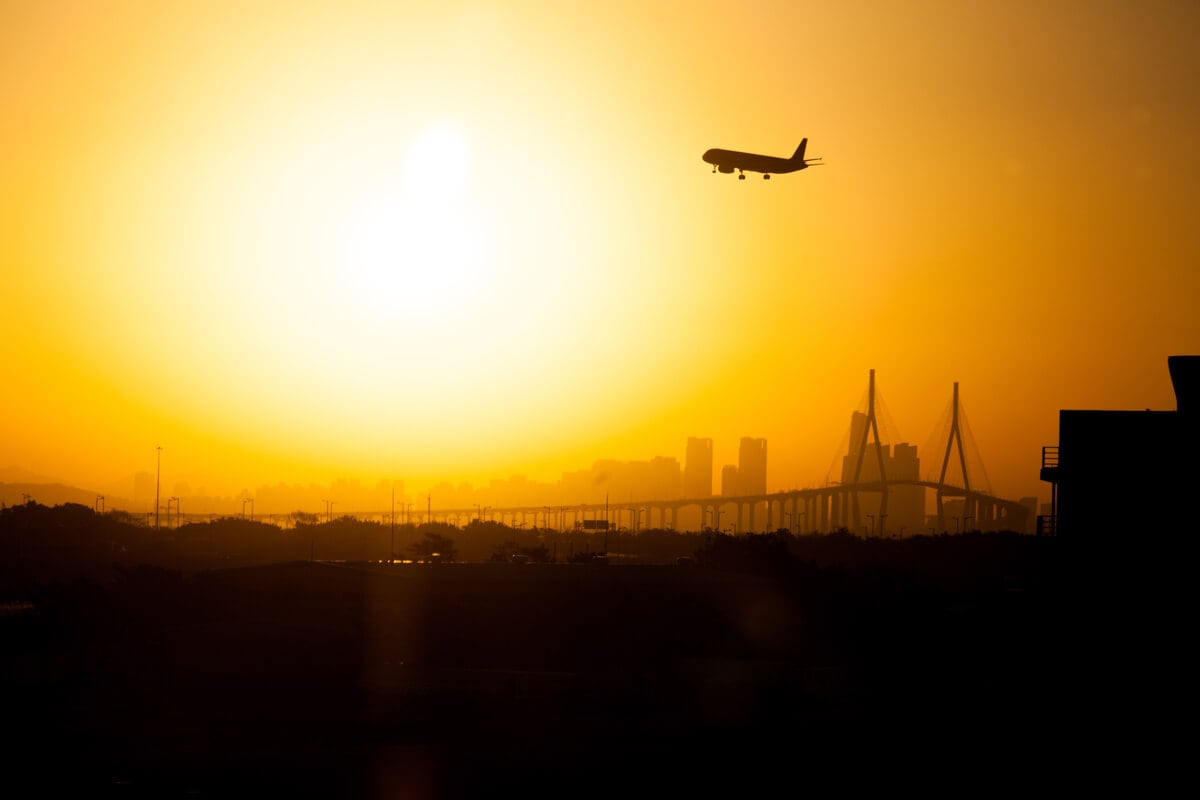
A bulk of the countries on the list get up to 90 days, including Americans, Aussies, Kiwis, and most EU countries. It’s always a good idea to check out the visa policy for South Korea before you plan your trip.
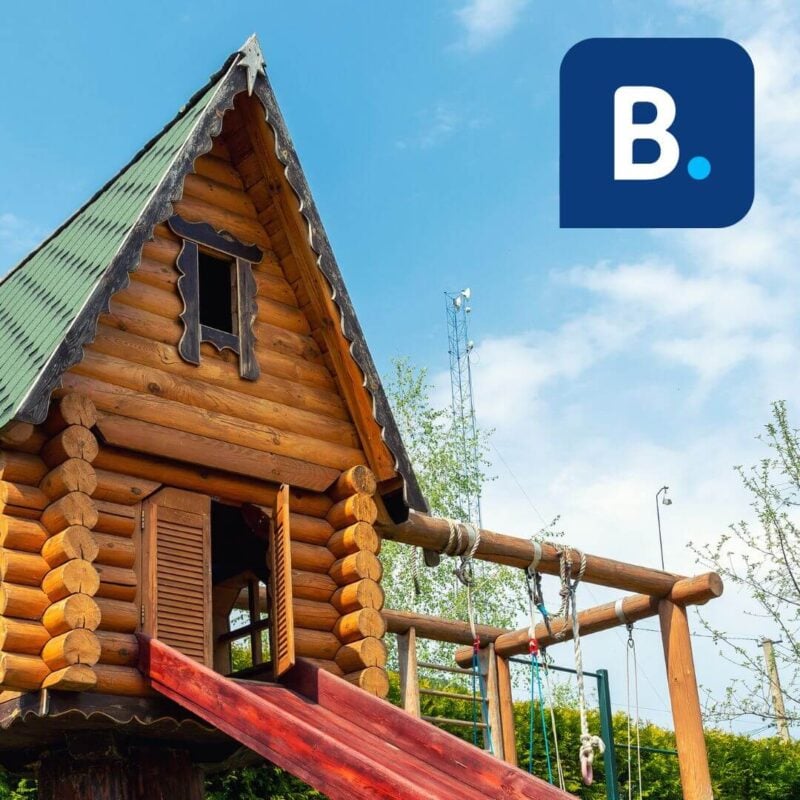
Get 15% OFF when you book through our link — and support the site you love so dearly 😉
Booking.com is quickly becoming our go-to for accommodation. From cheap hostels to stylish homestays and nice hotels, they’ve got it all!
View on Booking.comHow to Get Around South Korea
Getting around South Korea is quite easy thanks to the country’s compact size and excellent transportation system. You can get from one side of the country to the other in just a few hours. When backpacking South Korea, most travellers get around via a combination of bus and train.
The national rail operator is Korail, and there are train routes connecting most major cities. If you plan to move around a lot, it is worth looking into purchasing the KR Pass. These give you unlimited train travel for a set amount of time, up to 10 days maximum.
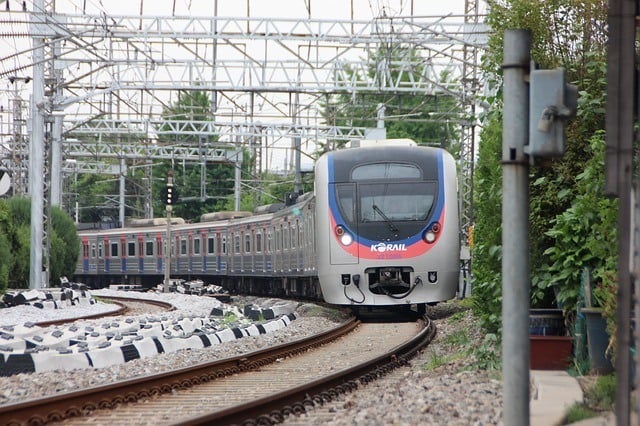
South Korea has a great bus system as well. You can get travel about anywhere in South Korea by bus in a timely and efficient manner. I’ve yet to take a train or plane in South Korea relying solely on the bus system to get around.
There are domestic flights between cities if you’re in a huge hurry, but you probably won’t need to fly unless you go to Jeju Island.
Hitchhiking in South Korea
I’ve never tried hitchhiking in South Korea, but apparently, it’s pretty easy. I’ve heard it’s similar to hitchhiking in Japan. It’s not super common but people do get it,
It helps to look presentable – clean-shaven and well-dressed – as well as staying smiley, cheery, and approachable. That said, if my experience hitchhiking in Japan and elsewhere in Asia is a good metric to go by, looking like a shaggy, colorful, hippy traveler works just as well.
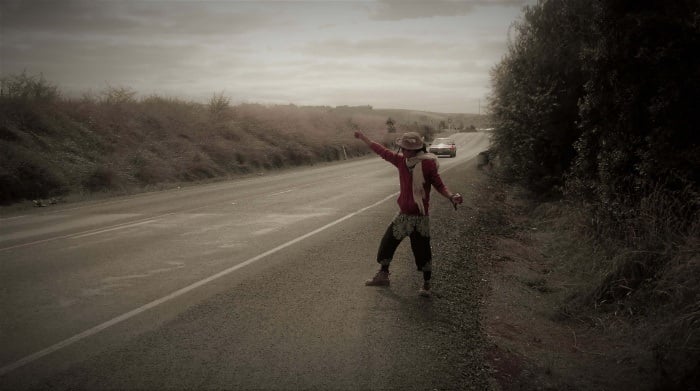
Photo: @themanwiththetinyguitar
Generally, people are just delighted to meet and help an eccentric foreigner. Signs written by locals can help you get to your next destination in South Korea a bit easier, however, always specify that you only need to go in the DIRECTION OF ‘X’. That way, people don’t think your explicitly asking for a free 200 km lift.
For more hitchhiking tips, check out Will’s Beginners’s Guide to Hitchiking post. And remember:
- Back straight.
- Look like your having fun.
- Keep smiling. 🙂
Onwards Travel from South Korea
Unfortunately, your options for overland onwards travel are pretty much non-existent. While some adventurous travellers (with the ability to do so) may want to check out North Korea, it’s not likely you’ll be backpacking through there.
If you want to skip out on a flight, you can take a ferry from South Korea to either China or Japan. One of the most popular ferry routes is to head from Busan to Fukuoka, as it takes just around three hours to make the crossing. From Incheon, you can catch a ferry to several different cities in China.
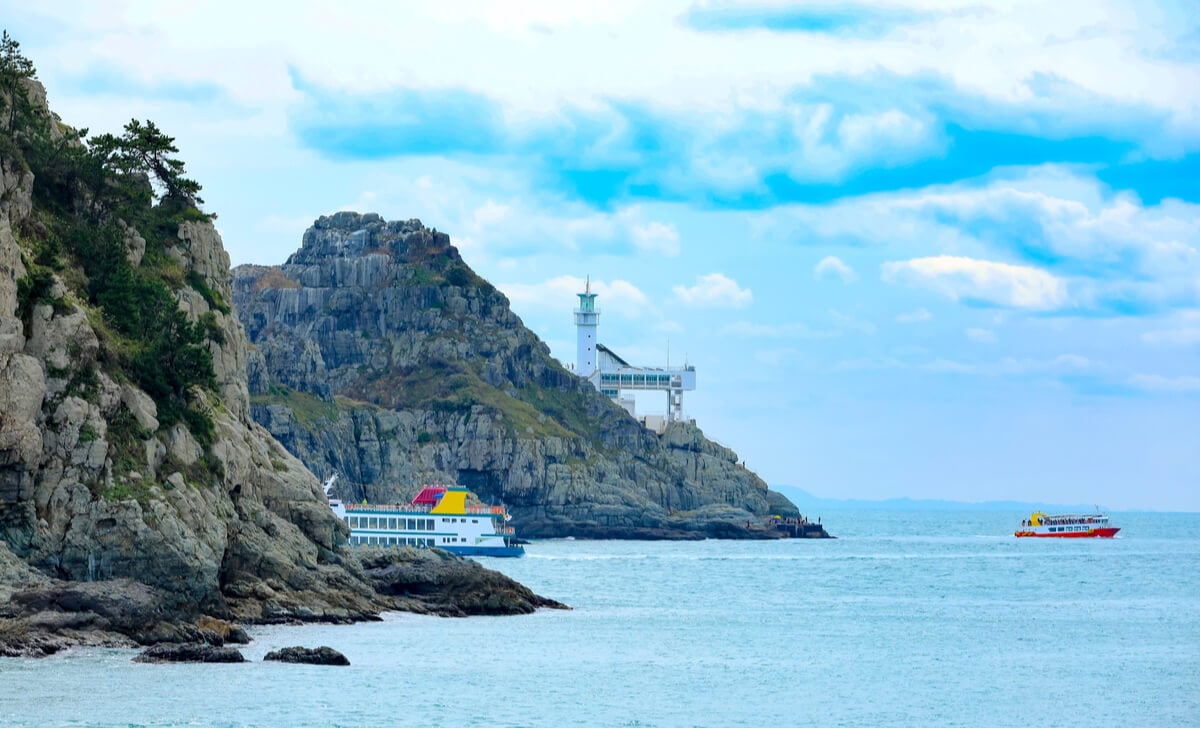
Of course, you can always catch a flight out of Seoul to virtually anywhere in the world. You have plenty of choices for onwards travel when flying out of the Korean capital, particularly major destinations in Southeast Asia like Bangkok or Singapore. A backpacking Southeast Asia adventure isn’t far away!
Working in South Korea
Yes, for sure and definitely. South Korea is what I like to call a part of ‘expensive Asia’. Wages are high, the cost of living is high, modern conveniences are plentiful, yet, somehow, rice and tofu are still crazy cheap because this is Asia and no man or woman shall ever be denied their rice!
What I’m trying to say is, South Korea is a great destination for the working traveler provided your willing to endure the bureaucratic rigmarole. Here’s a great guide that breaks down the types of and requirements for South Korean work visas. Essentially though, you’ll be applying for a different visa depending on your occupation.
Now, if you DON’T want to plow through the bureaucratic rigmarole, volunteering in South Korea is also a fantastic option! Although, you may want to consider joining a reputable volunteering platform in order to find decent gigs. English is tough to come by, and it’s always good to have a trustworthy service behind you as you travel.
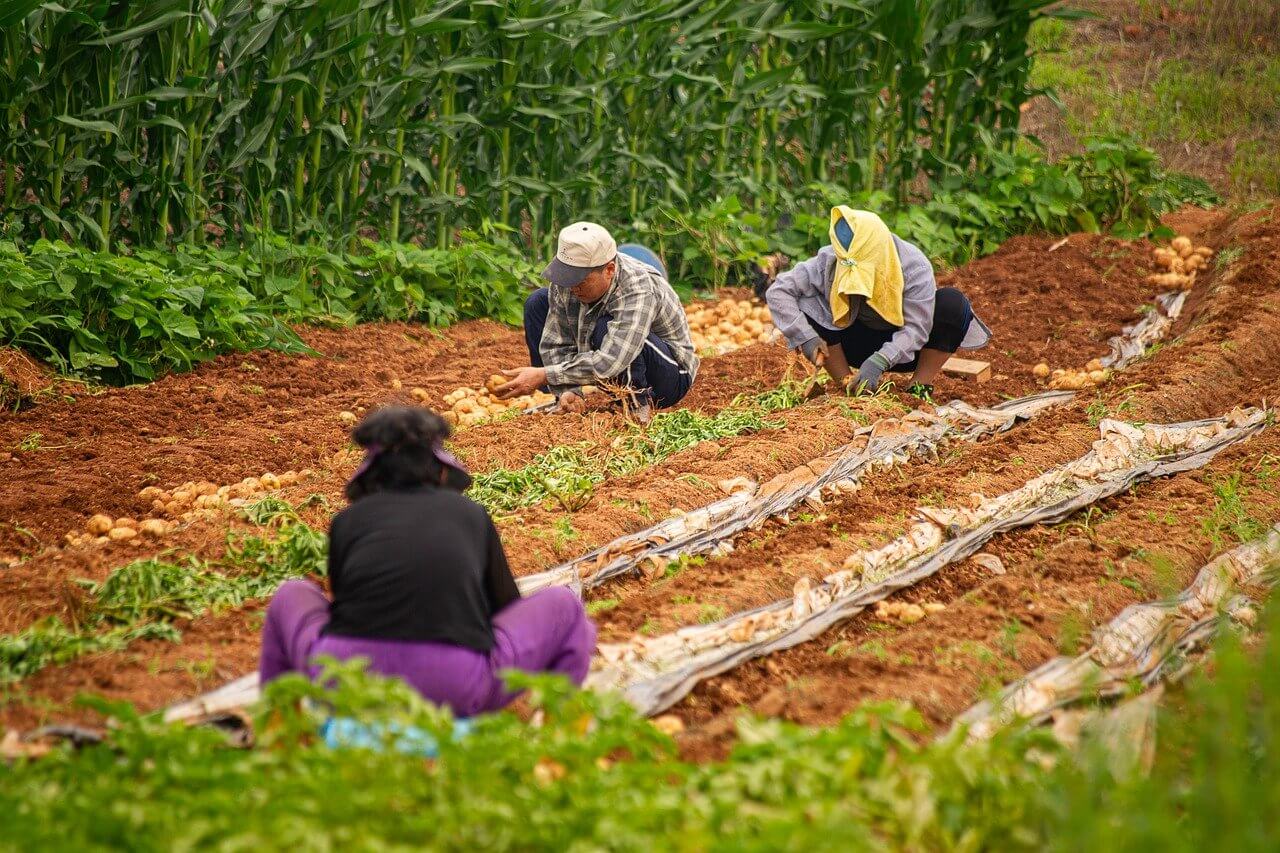

A new country, a new contract, a new piece of plastic – booooring. Instead, buy an eSIM!
Jetpac eSIMs work just like an app: you download it, pick your plan, and BOOM! You’re connected the minute you land. It’s that easy.
Read about how e-Sims work or click below to see one of the top eSIM providers on the market and ditch the plastic.
Grab an eSIM!Volunteering in South Korea
Volunteering abroad is an amazing way to experience a culture whilst helping your host community. There are plenty of different volunteer projects in South Korea including teaching, construction, agriculture and pretty much anything.
South Korea is full of opportunities for backpackers to volunteer. Most gigs you’ll find are teaching English, but there are also plenty of opportunities to work in hospitality in exchange for free accommodation. All you need is a tourist visa and you’re ready to get started!
Want to find some awesome volunteering opportunities in South Korea? Then signup for Worldpackers, a platform that connects local hosts with volunteer travelers. As a Broke Backpacker reader, you’ll also get a special discount of $10. Just use the discount code BROKEBACKPACKER and your membership is discounted from $49 a year to only $39.
Programs run through reputable work exchange programs, like Worldpackers, are generally very well-managed and highly reputable. However, whenever you are volunteering do stay vigilant especially when working with animals or children.
Teaching English in South Korea
You know what’s even better than traveling? Getting paid to do it! If you’ve ever thought about teaching English abroad, South Korea is hands down one of the best places to give it a try.
In a country obsessed with education, jobs for native speakers are abundant. South Korea is also one of the highest-paying places to teach English. That brings us to our next point.
There are tons of jobs for native English speaking teachers in South Korea. If you’re a native speaker with a college degree and a TEFL certificate, you can easily find a job teaching in South Korea.
You WILL need TEFL certificate though; they’re super easy to obtain through online courses. We recommend going through MyTEFL because not only are they an excellent organisation, but you can also score yourself a 50% discount using the code PACK50.
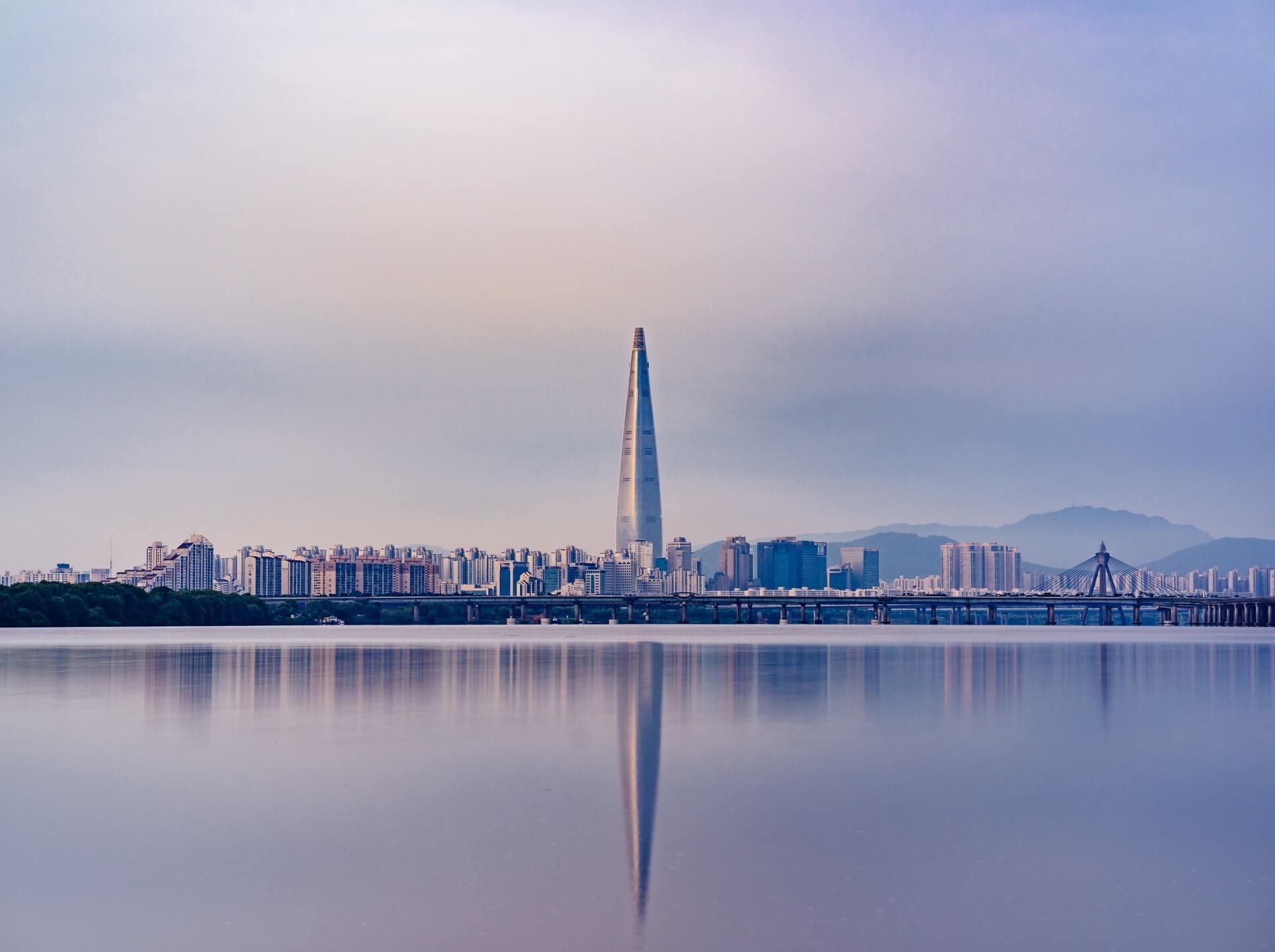
Getting a TEFL with Global Work and Travel is also a viable option. You can do the course either online or in Icheon where you’ll stay in shared accommodation with other TEFLers. They’ll also assist you with the VISA process and getting a job on completion of the course. There isn’t much they don’t help you with so you can’t really go wrong!
Many English teachers start out by working in a hagwon, which is basically an after-school and weekend gig. Even brand new teachers earn a decent salary and usually get an apartment provided by the school, in addition to airfare reimbursement at the end of a year contract.
Once you’ve got some experience under your belt, you can transition to a public school or university job and work a normal schedule.
Many people turn to teaching English in South Korea into a career and make really good money doing it. I have many friends who have taught English in South Korea and almost all of them had a great experience, except one buddy who had an awful boss. That can happen anywhere, though…
If you’re interested in learning more about working as an ESL teacher in South Korea, check out my interview with our friend Gwendolyn about her time spent teaching English in South Korea.
What to Eat in South Korea
Oh wow. Where to begin? Enjoying the mouth-watering cuisine is definitely a highlight of backpacking South Korea. Make sure you hit up some street food, hole in the wall local joints, and Korean BBQ restaurants.
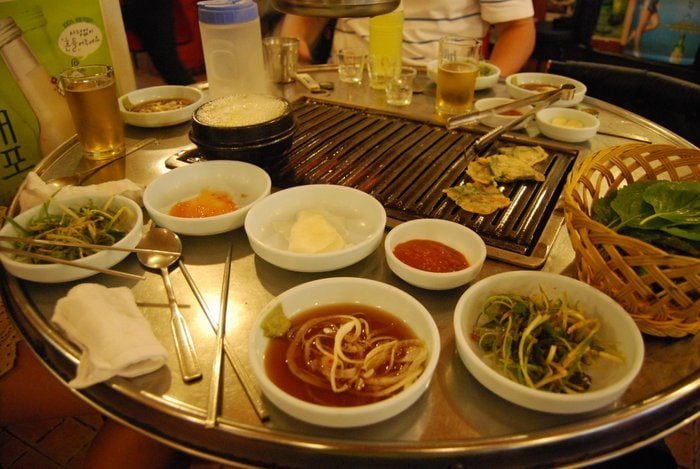
Photo: Sasha Savinov
It is also worth mentioning that pretty much every meal comes with some kind of banchan or side dish; the amount basically scales with how you’re eating. If you’re eating solo, you’ll typically get 1-3, but if you’re in a big group you’ll get a bunch of banchans.
Popular Dishes in South Korea
Here are some dishes you have to try in South Korea:
- kimchi = the national dish – spicy, fermented cabbage
- bibimbap = a rice bowl with vegetables, spicy sauce, and a fried egg
- bulgogi = marinated beef
- japchae = stir-fried noodles
- teokbokki = rice cakes spicy sauce
- pajeon = savory pancake made of flour, green onions, and whatever else
- samgyetang = a soup with ginseng broth and chicken stuffed with rice
- dubu kimchi = stir-fried pork and kimchi served with boiled tofu
South Korean Culture
South Korea is a very homogenous country – around 96% of the population is Korean – so it’s not hard to meet Koreans. What might be hard is communicating, as English is not very prevalent. Most young people speak some English, although many be shy to speak a second language with foreigners.
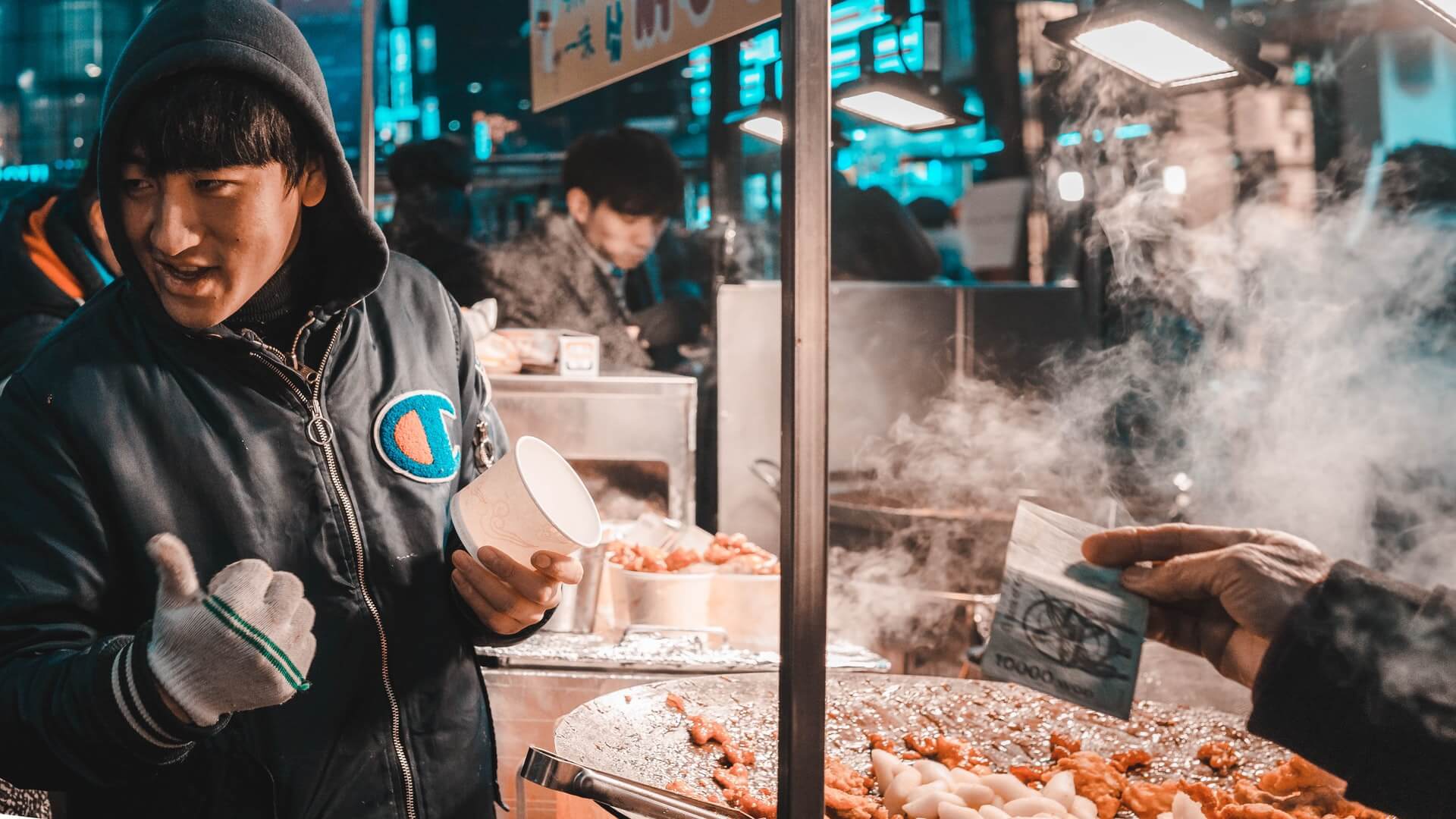
People in South Korea like to get outside and socialize in public parks when the weather is nice. Coffee shops and tea houses are also popular places to hang out and chat. As hiking is so big in South Korea, you’ll always meet people out on the trails.
Of course, you can always go out to bars and meet people as well. As I mentioned above, Koreans like to throw back a few cold ones after work (with a little soju mixed in, of course). Strike up a conversation and next thing you know it’s 3 AM and you’re hammered drunk belting out some karaoke. Welcome to South Korea!
Useful Travel Phrases for South Korea
Korean is difficult to learn, but a little effort goes a long way when learning a new language for travel. Plus, it opens up all kinds of experiences and opportunities.
Here are a few useful Korean travel phrases to get you started:
- Ahn-nyung-ha-se-yo = Hello
- Bahn-gap-seup-ni-da = Nice to meet you
- Uh-dduh-keh ji-neh-seh-yo? = How are you?
- Neh = Yes
- Ah-nee-oh = No
- Jwe-song-ha-ji-mahn = Please
- Gam-sa-ham-ni-da = Thank you
- Binil bongjiga eobsda = No plastic bag
- Jebal jip-eusibsio = No straw please
- Peullaseutig kal but-igi balabnida = No plastic cutlery please
- Chon-mahn-eh-yo = You’re welcome
- Sil-le-hahm-ni-da = Excuse me
- Yong-o-rul hahl-jool a-se-yo? = Do you speak English?
Books to Read About South Korea
Reading up on South Korea before visiting is a great way to earn some insight into the country!
- The Birth of Korean Cool: Find out how “one nation is conquering the world through pop culture” in this fascinating read. Beyond “Gangnam Style,” writer Euny Hong shows how a very uncool country became cool.
- Korea: The Impossible Country: How did South Korea transform itself from a failed country into an economic powerhouse in just 50 years? Find out in this in-depth look into South Korea’s rise from the ashes.
- The Two Koreas: A Contemporary History: Learn about the complicated history of the Korean Peninsula from World War II up to the present day in this highly acclaimed book.
A Brief History of South Korea
I’ll begin to explain South Korea’s recent history with the founding of the country on August 15, 1948. After the Japanese surrendered in World War II, the peninsula was partitioned – the US would administer the south, while the Soviet Union would administer the north.
The division was supposed to be temporary, but it didn’t quite work out that way. The Korean War broke out in 1950 and lasted for three long and bloody years. With no agreement, the status quo remained and the two would go on as separate entities.
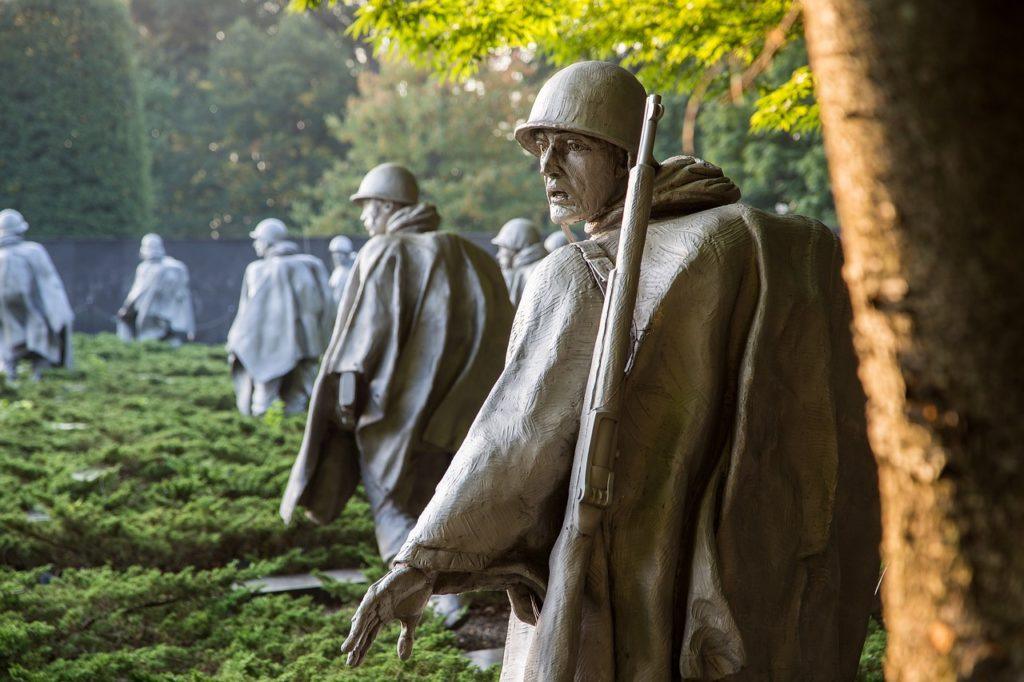
In the 70 years since the Korean War, it’s remarkable to see the stark contrast between the two Koreas. Just look at a satellite image of the Korean peninsula at night. While South Korea is full of bright, shining lights, the north is shrouded in darkness.
Since its founding, South Korea has gone through periods of democratic and autocratic rule. The era known as the First Republic was mostly democratic, but the Second Republic was overthrown early on and replaced by an autocratic military regime.
The country is currently in the Sixth Republic and is, for the most part, a liberal democracy.
South Korea elected its first female president, Park Gyuen-hye, in 2013. However, she was impeached in 2016 due to a corruption scandal.
The current president is Moon Jae-in, who was inaugurated in 2017. He made history by meeting with North Korean leader Kim Jong-un, and has done so on multiple occasions now.
Final Advice Before Visiting South Korea
Just as you would anywhere else in the world, be sure to respect the local culture and customs when backpacking South Korea.
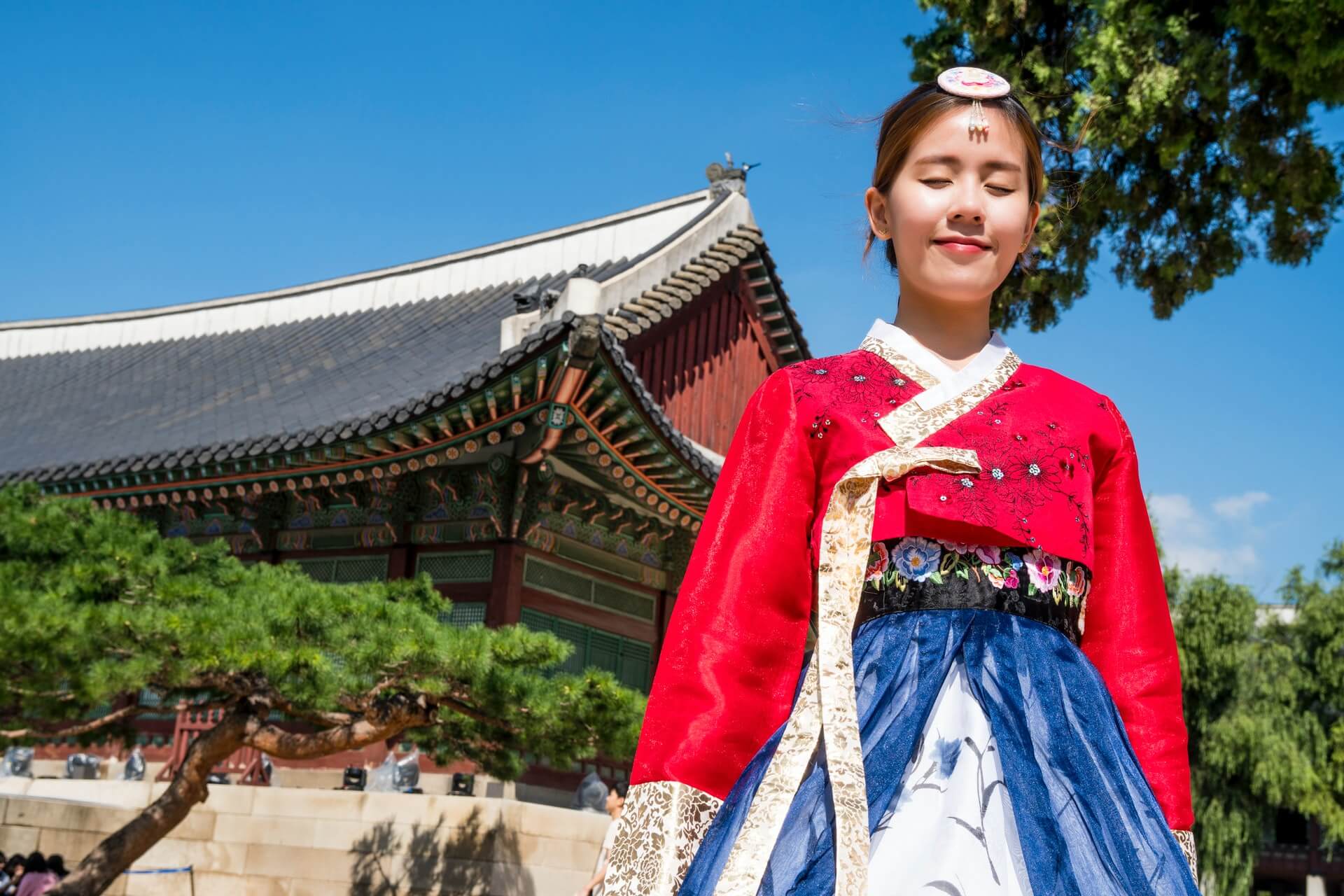
For example, you should always pour someone else’s drink before your own, and shouldn’t leave chopsticks in your rice bowl, as this resembles ancestral ceremonies.
Be sure to remove your shoes when you enter someone’s home in South Korea. People love sitting and even sleeping on the floor here, so it’s very rude to muck it up with your dirty shoes. Other than that, just be respectful and friendly and people here will treat you very well.
And Have a Blast Backpacking in South Korea
While South Korea isn’t often brought up as a backpacking destination, it most certainly should be. With bustling cities, tons of outdoor adventures, a vibrant culture, and even a beautiful island, you’re sure to have a great time backpacking South Korea.
This is a fascinating country that has transformed drastically over the last few decades. It’s amazing to see the clash of tradition and modernity taking place here.
On one hand, Koreans proudly celebrate their traditions and ancient culture. On the other hand, they’re sprinting towards the future with break-neck speed.
Should you decide to travel to South Korea, you will be well rewarded. It’s an affordable destination that offers tons of unique experiences.
Best of all, you don’t need a lifetime to take in all that the country has to offer. Carve out a few weeks to dive into South Korea, and it will be one of the best trips you ever take.
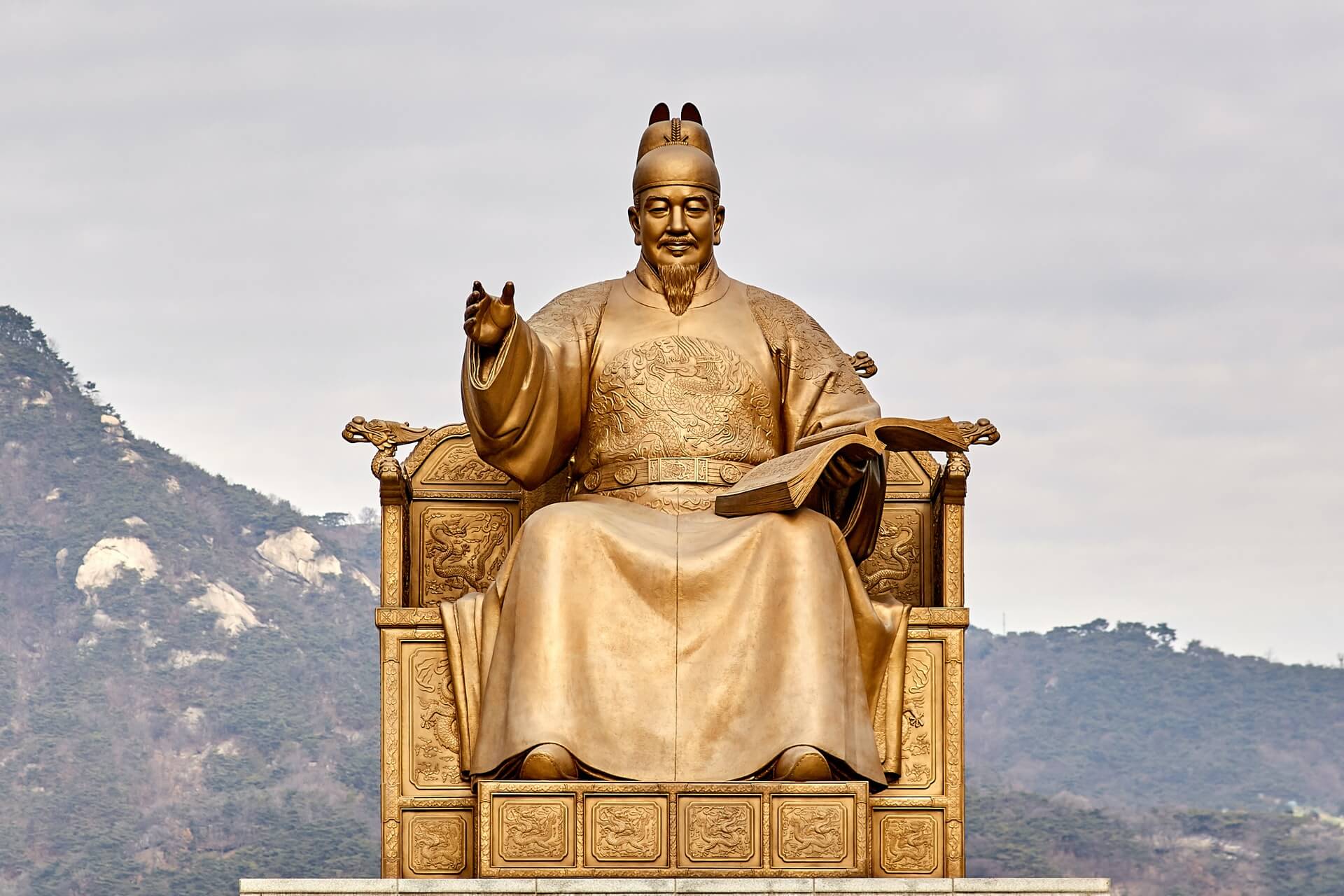
Buy Us a Coffee!
A couple of you lovely readers suggested we set up a tip jar for direct support as an alternative to booking through our links. So we created one!
You can now buy The Broke Backpacker a coffee. If you like and use our content to plan your trips, it’s a much appreciated way to show appreciation 🙂


